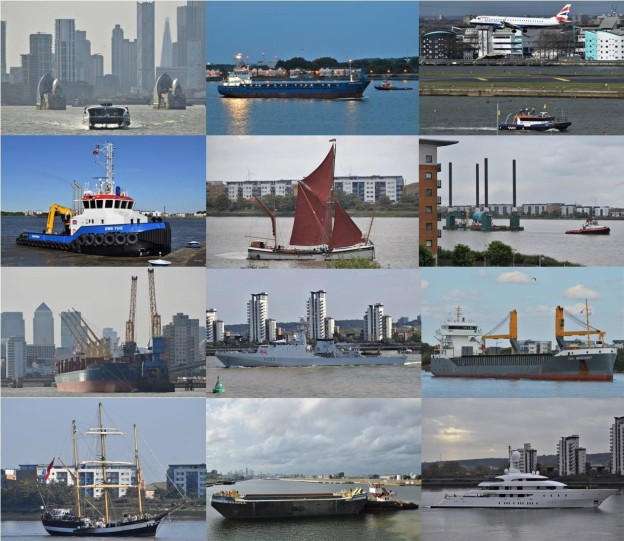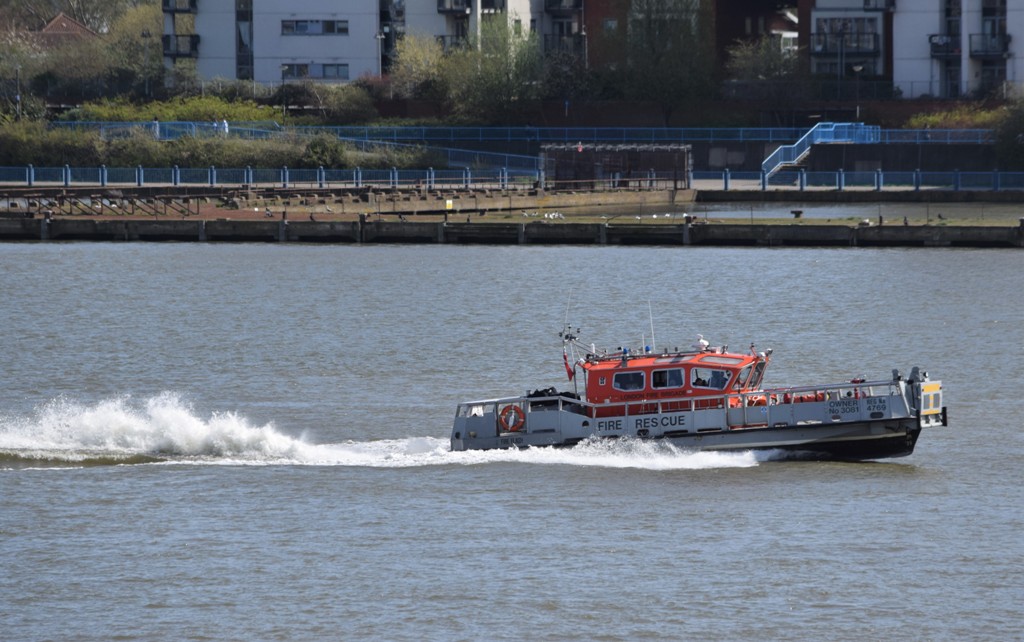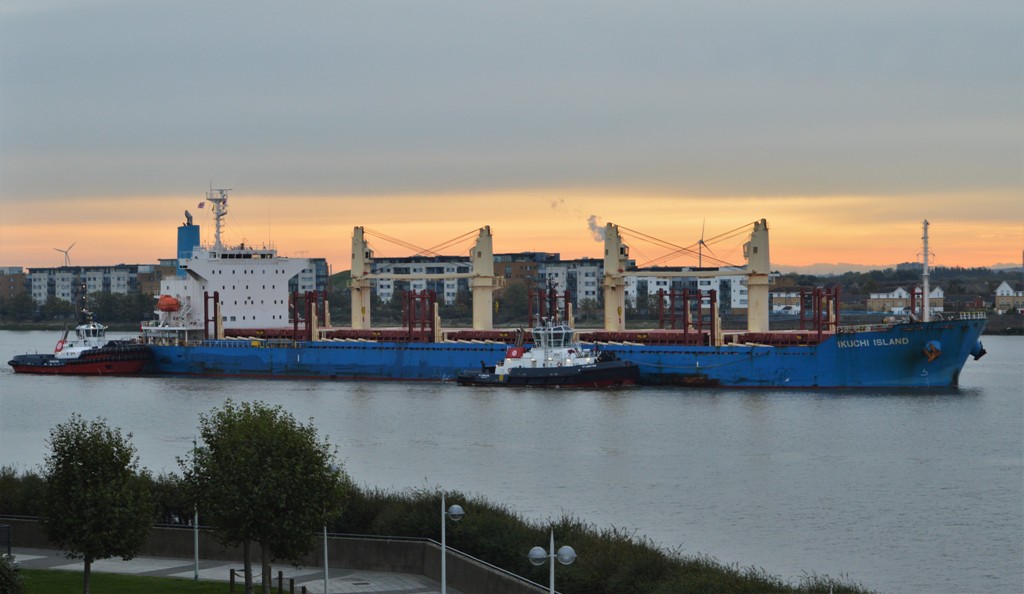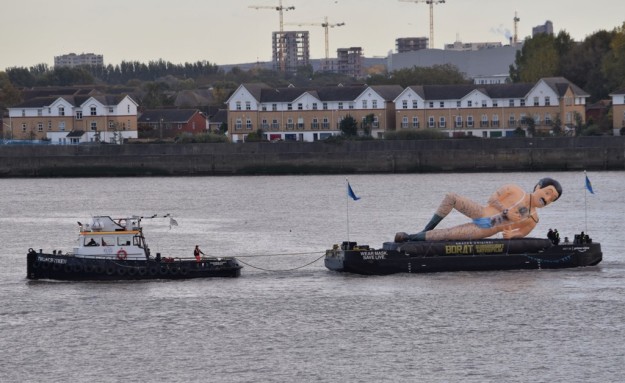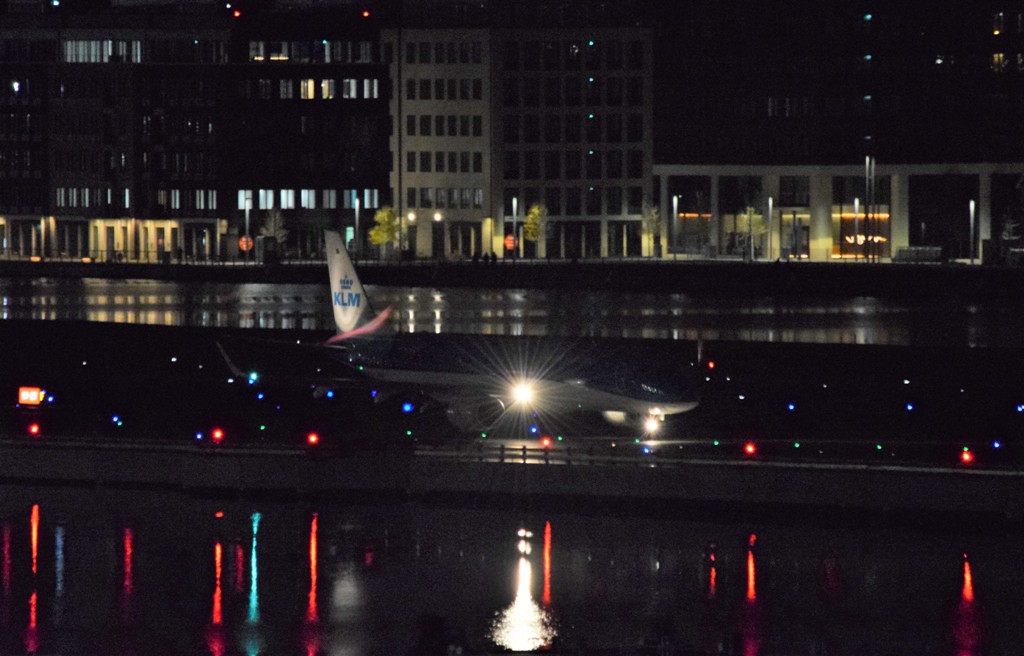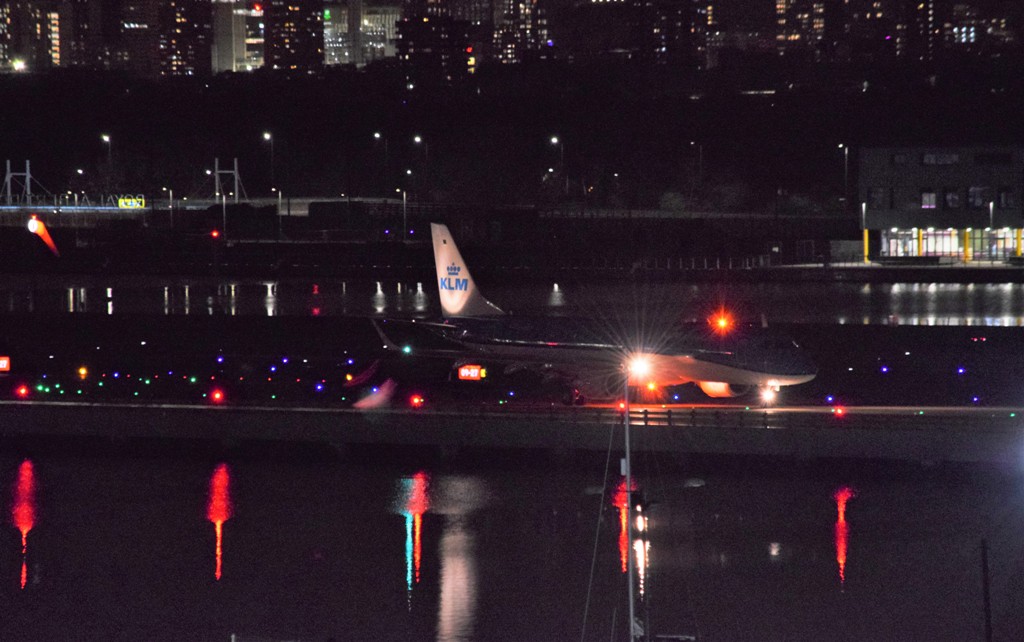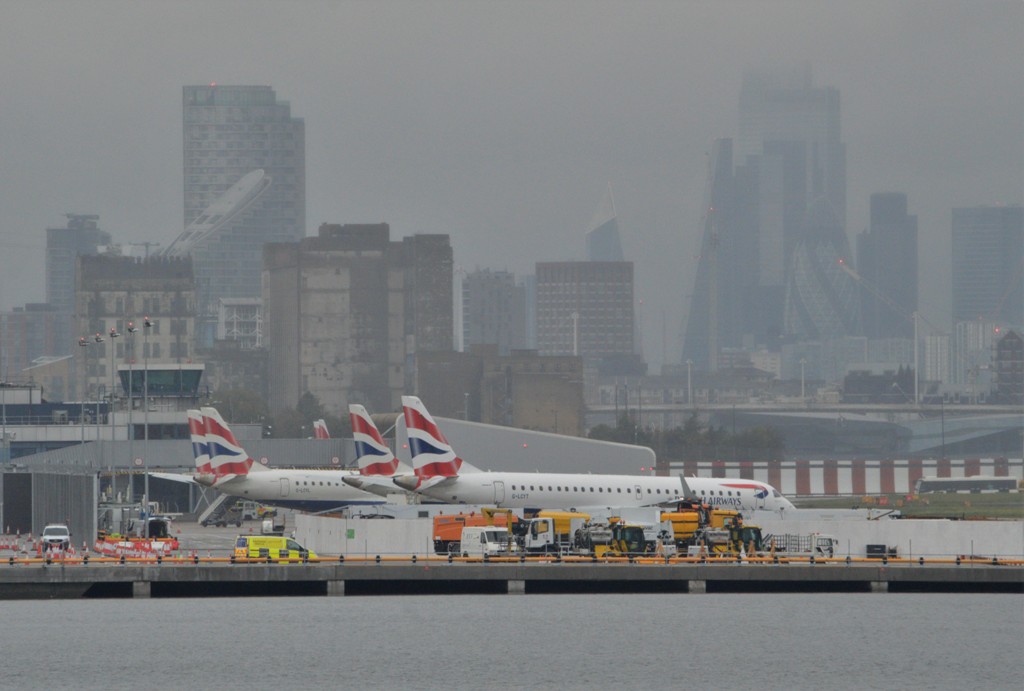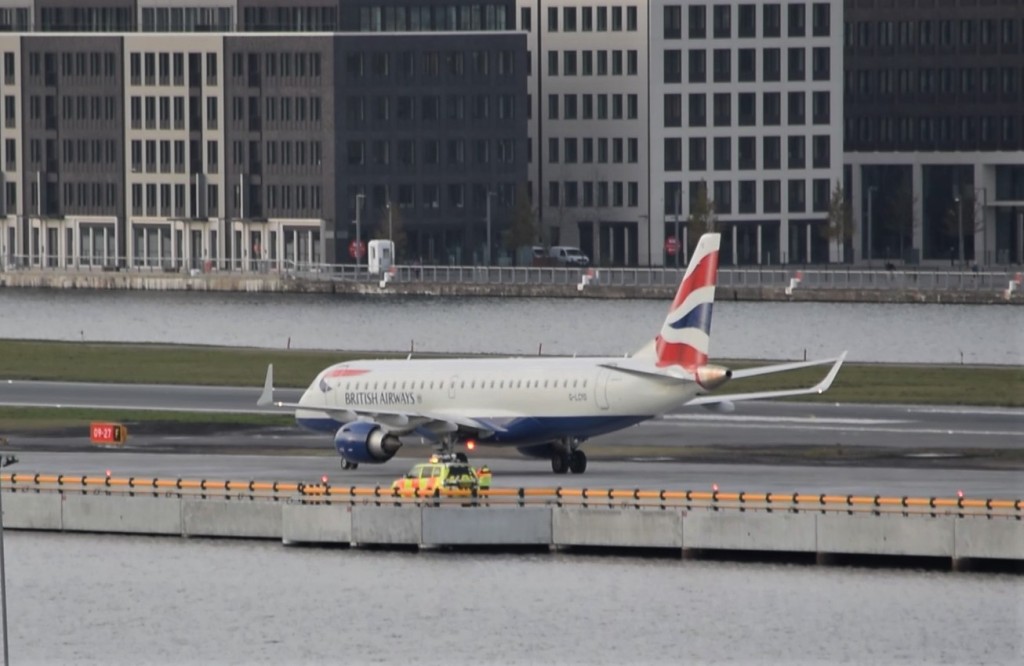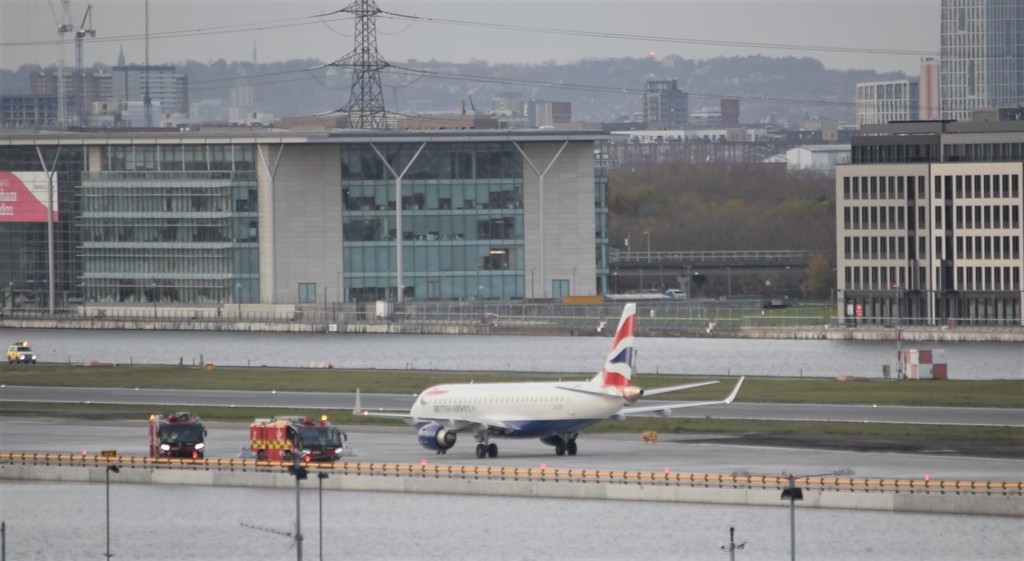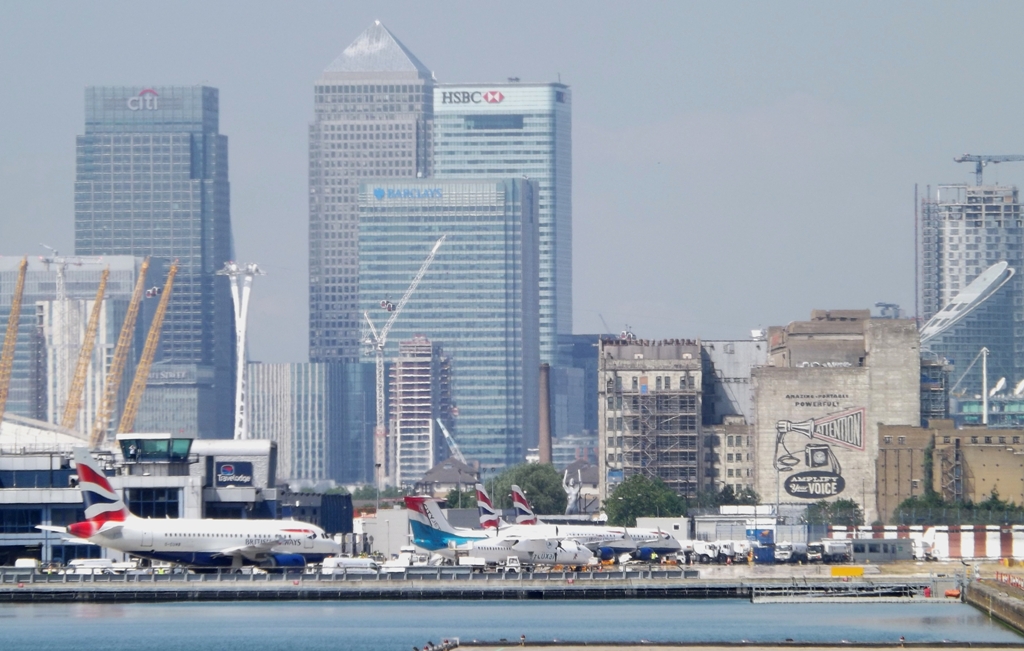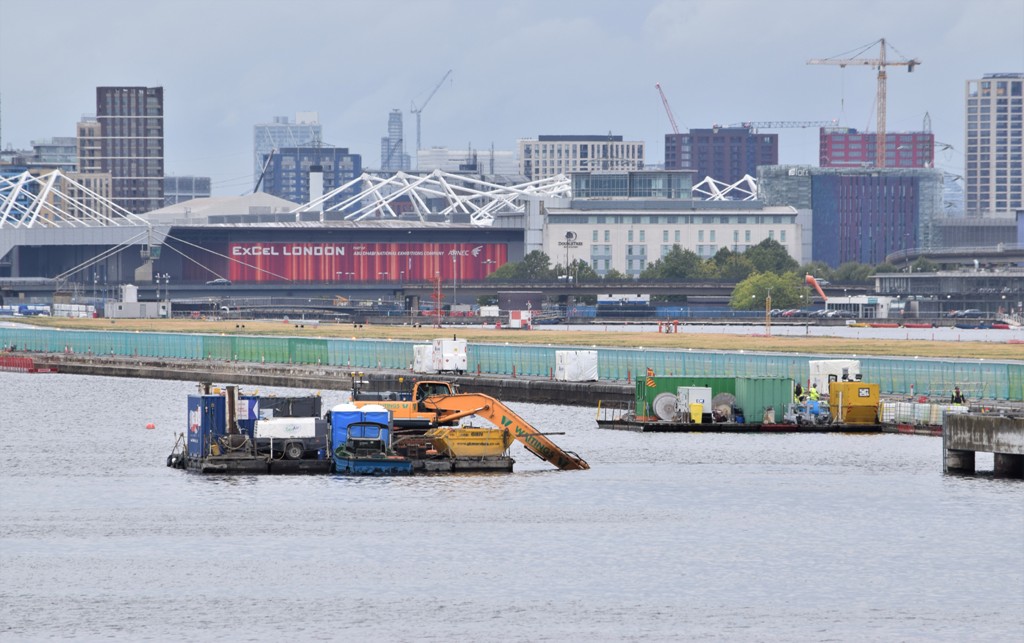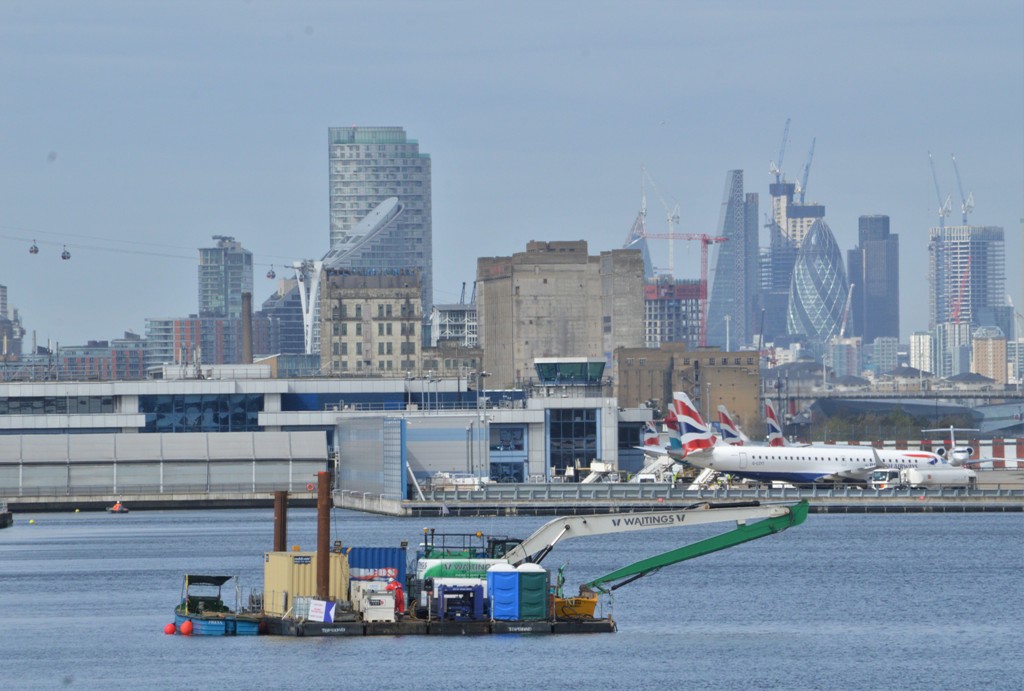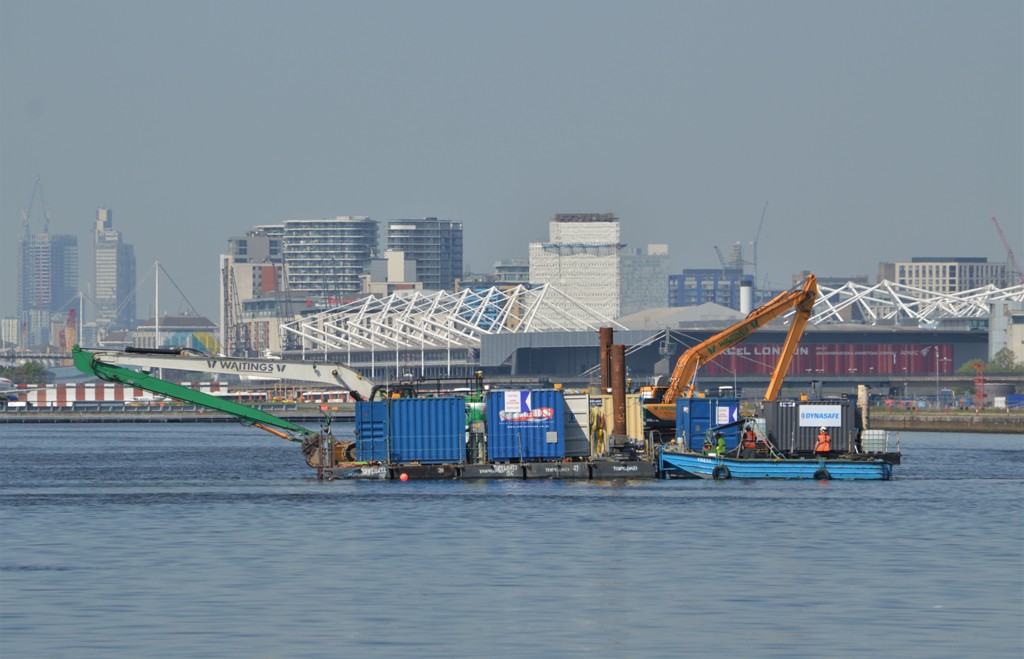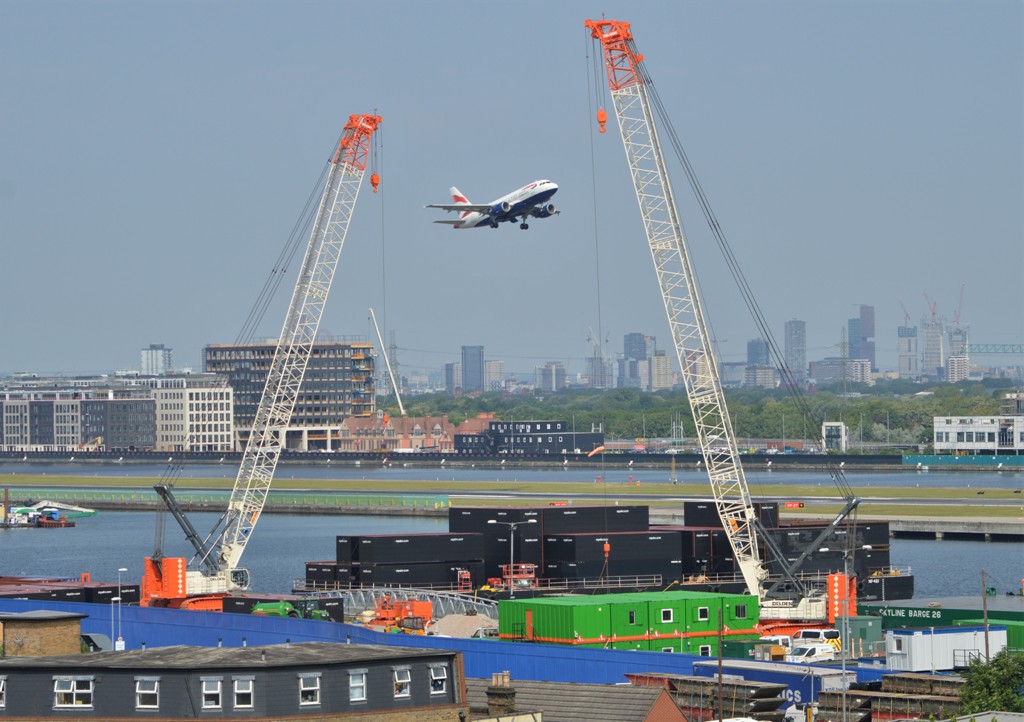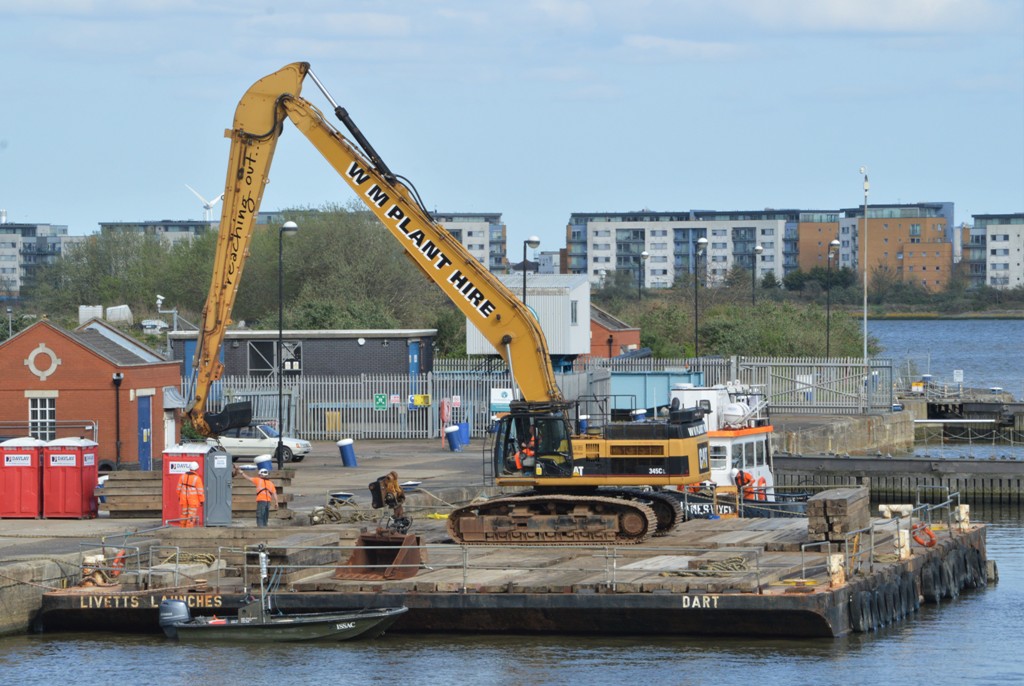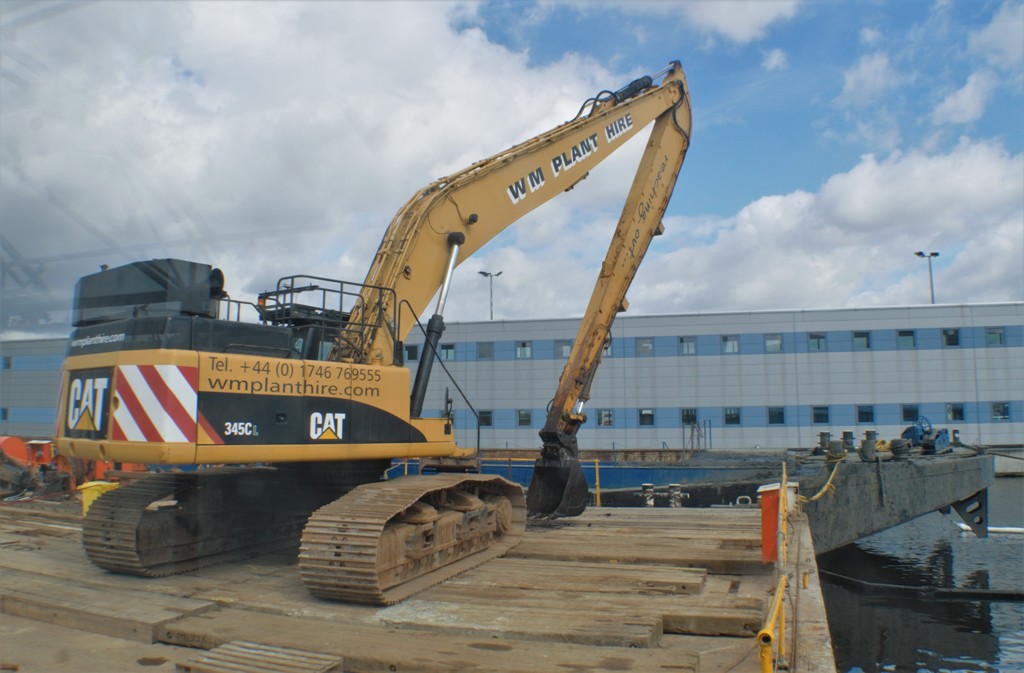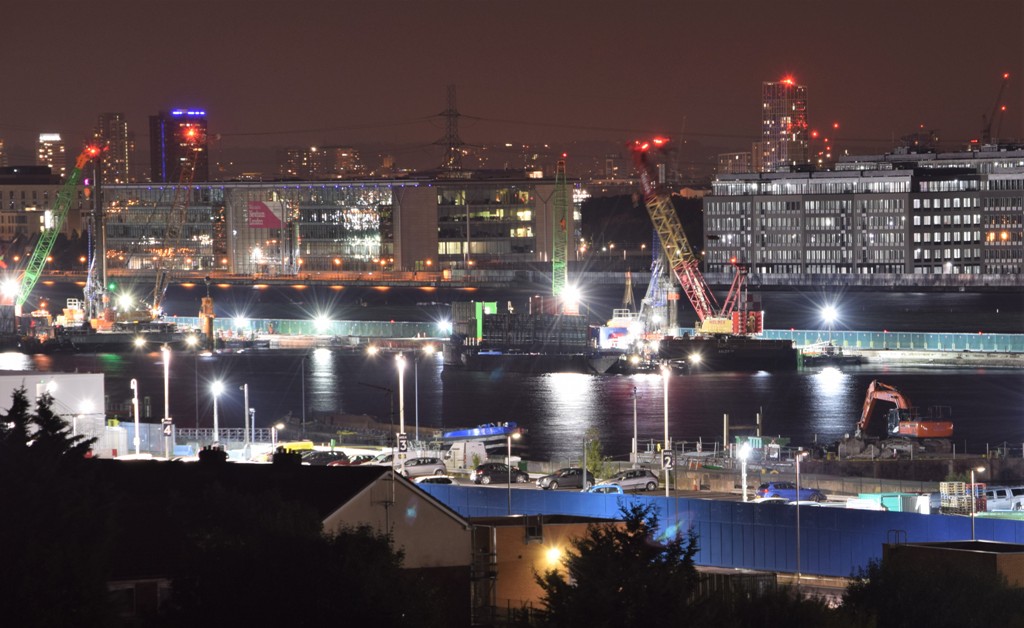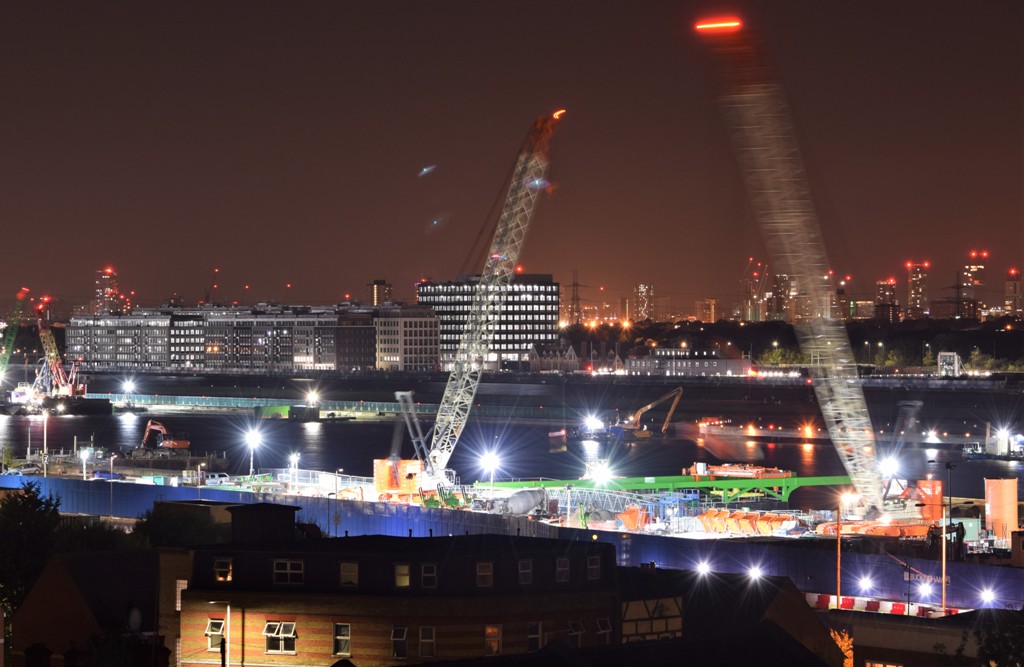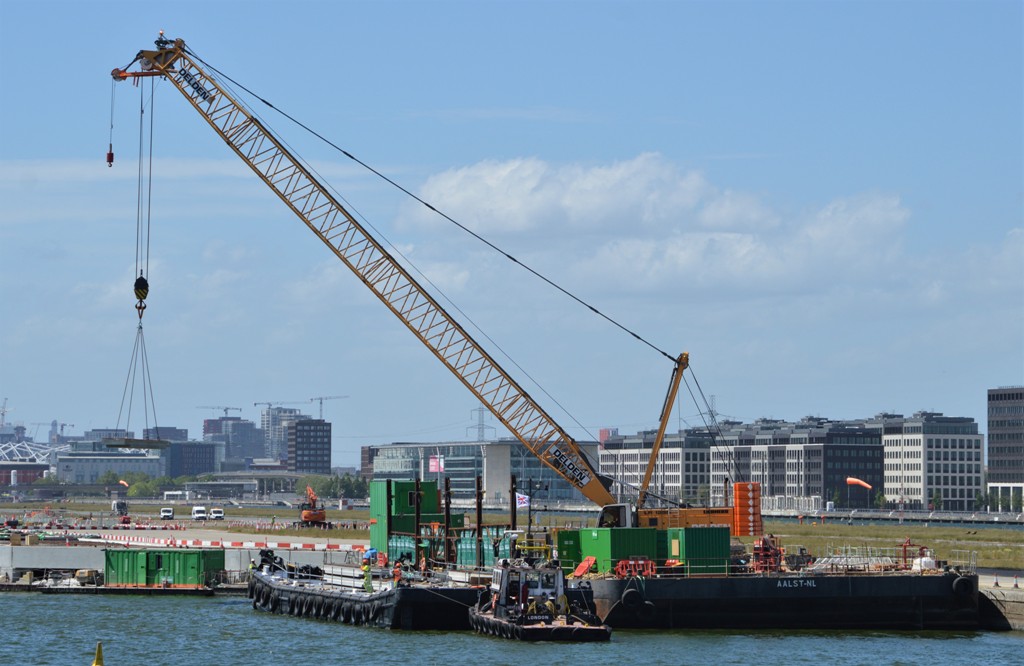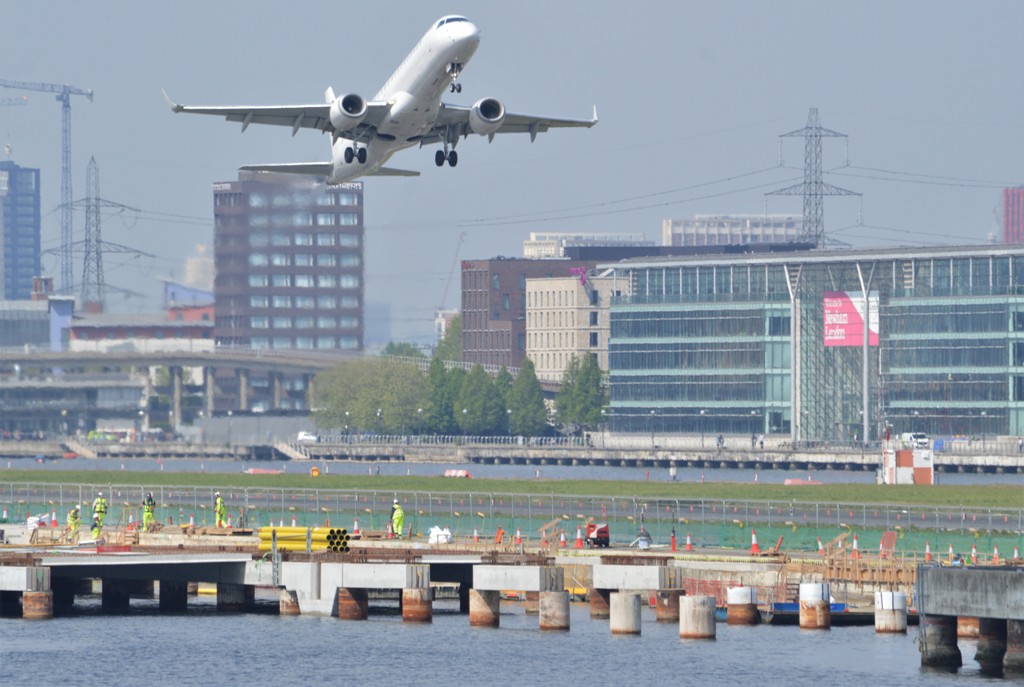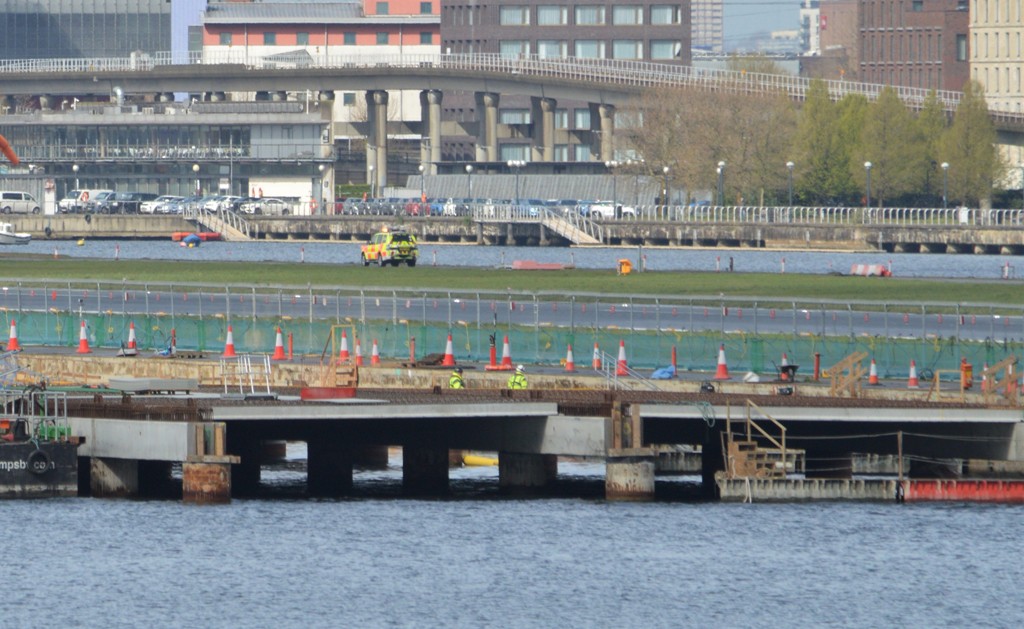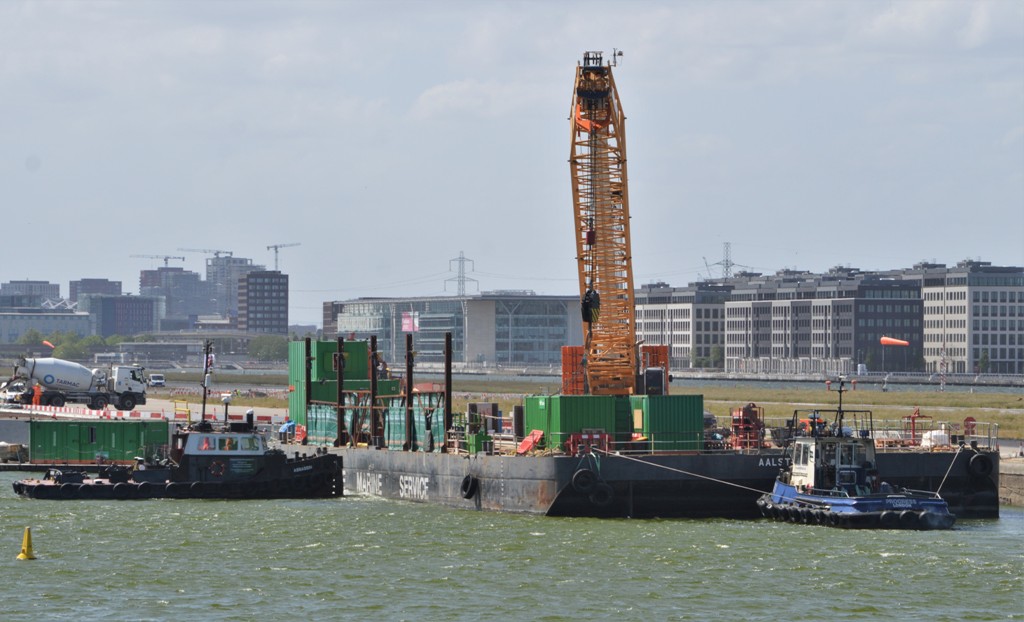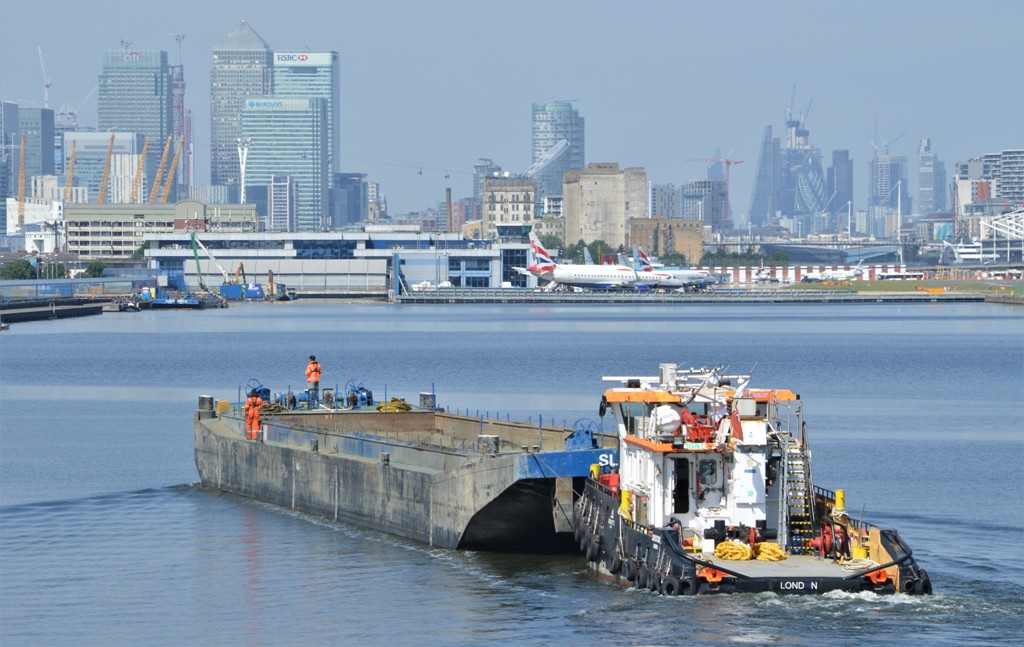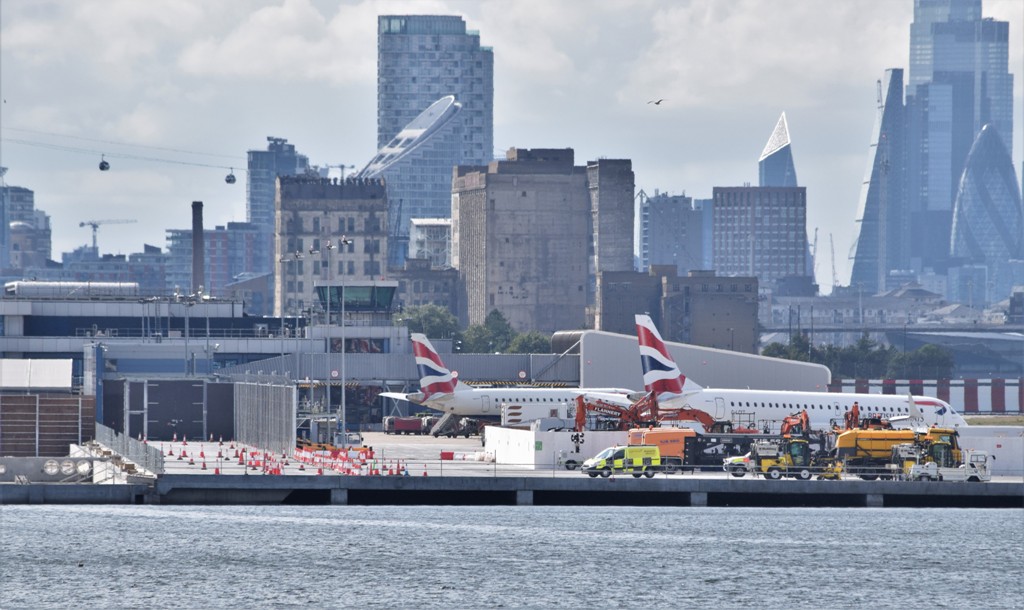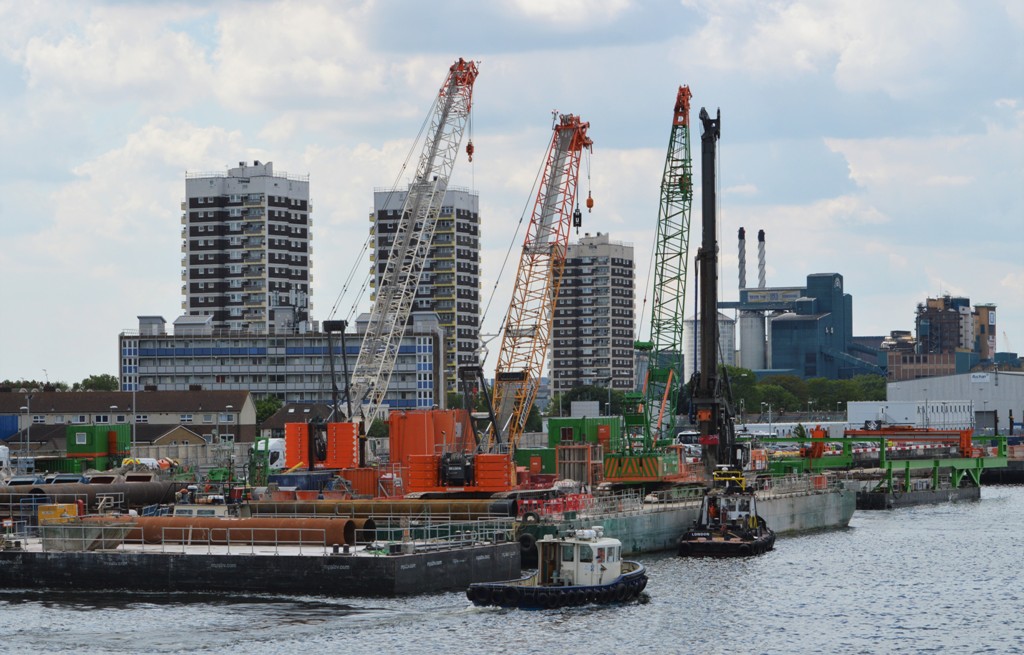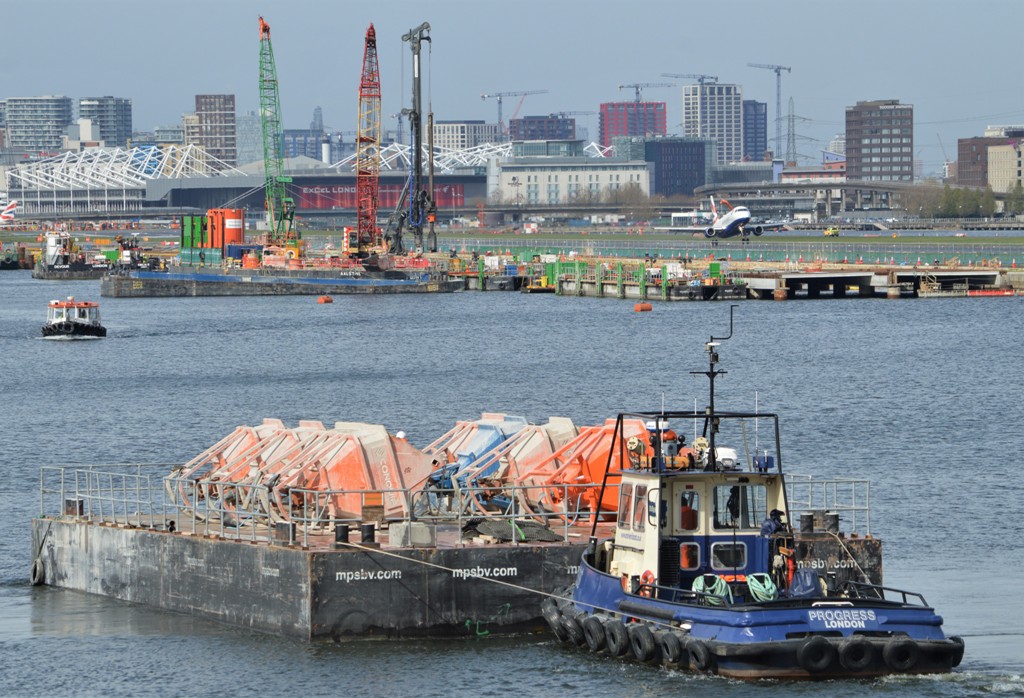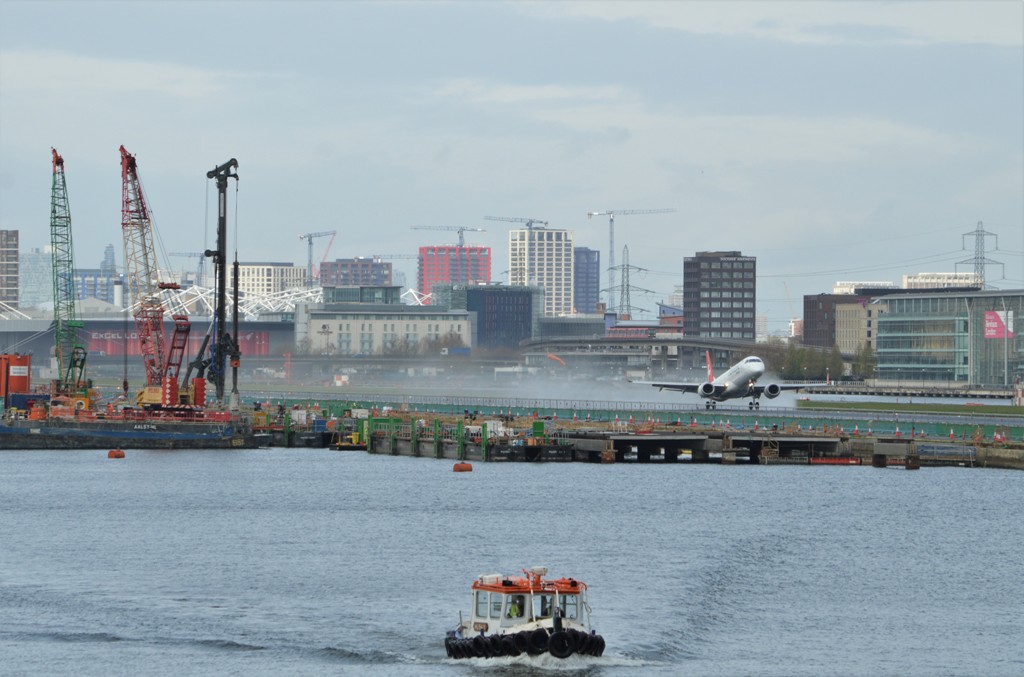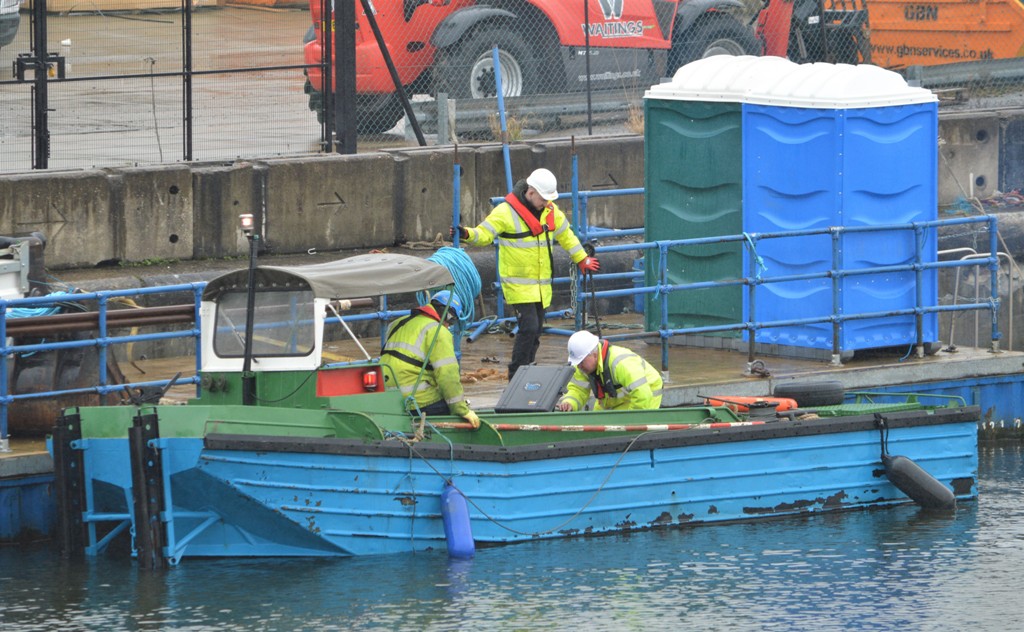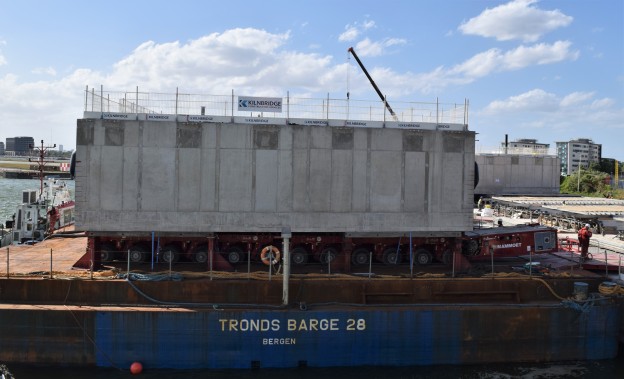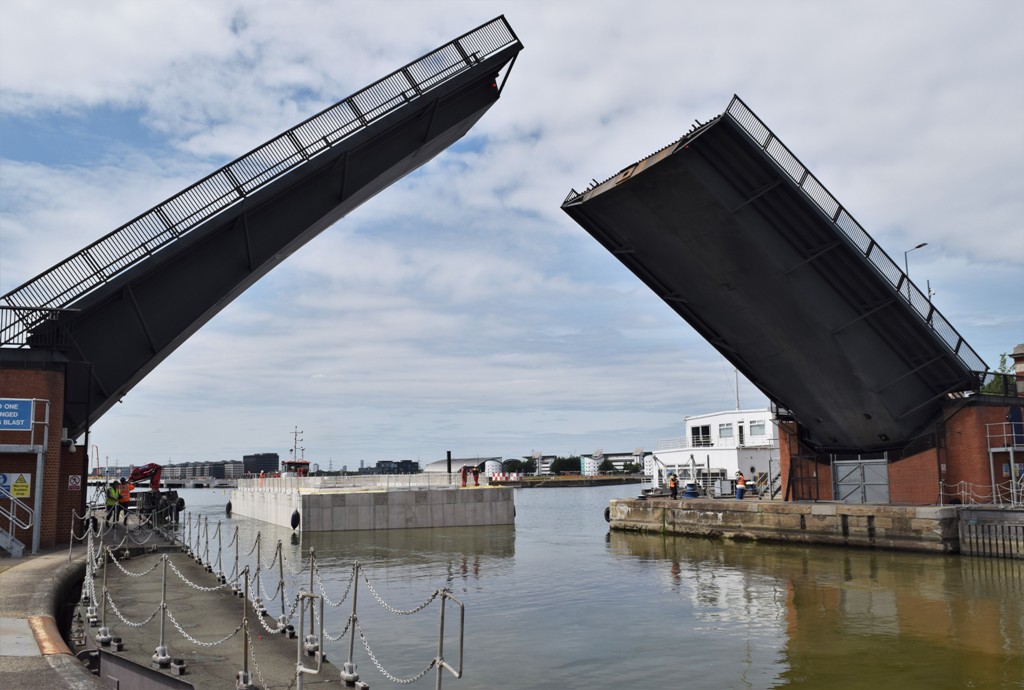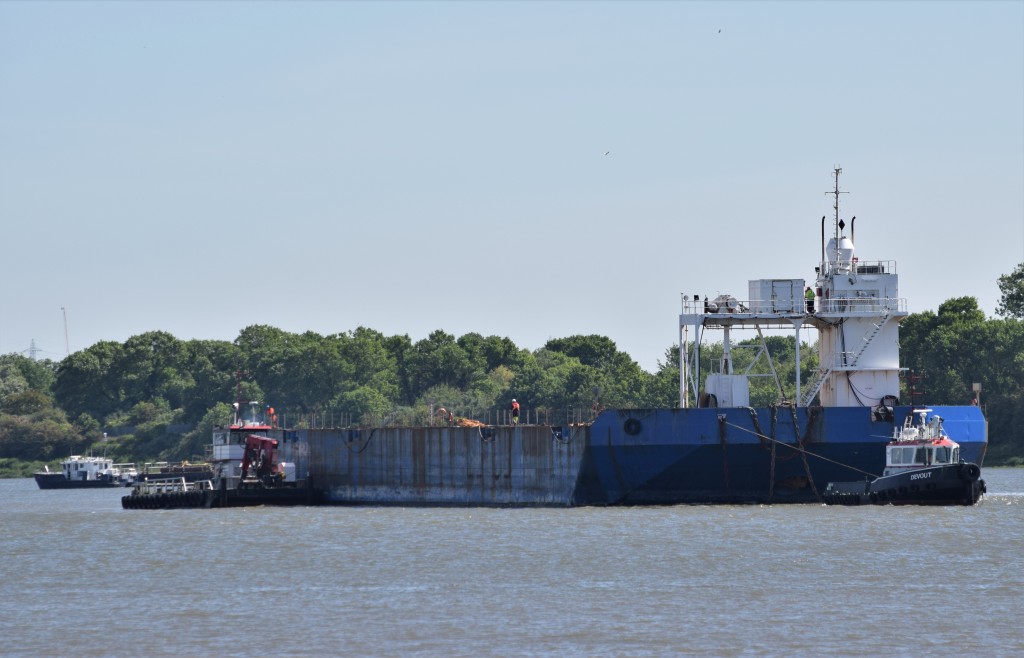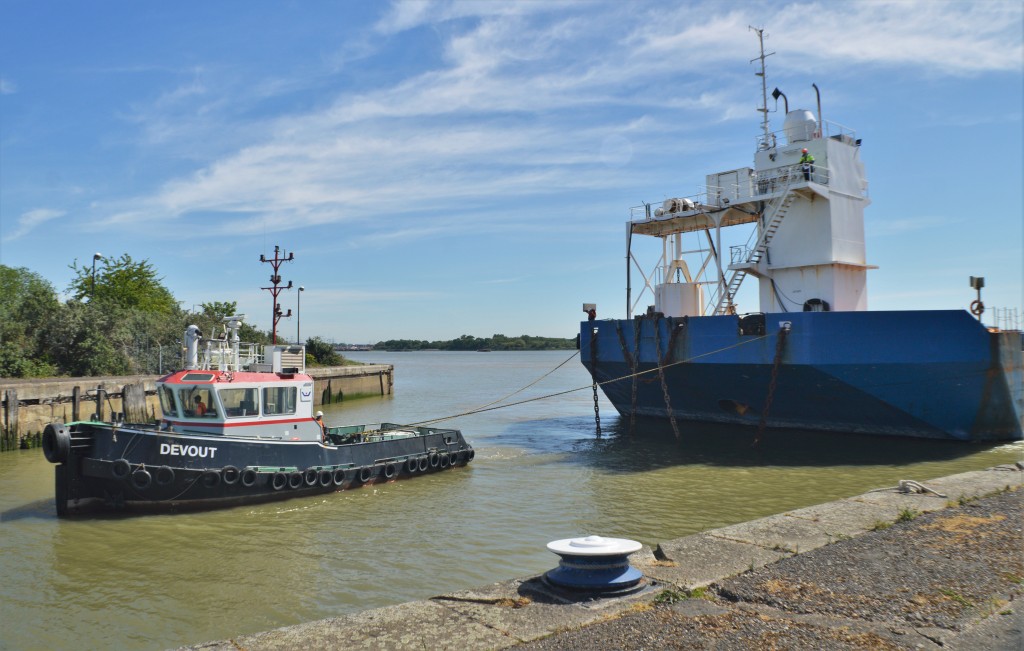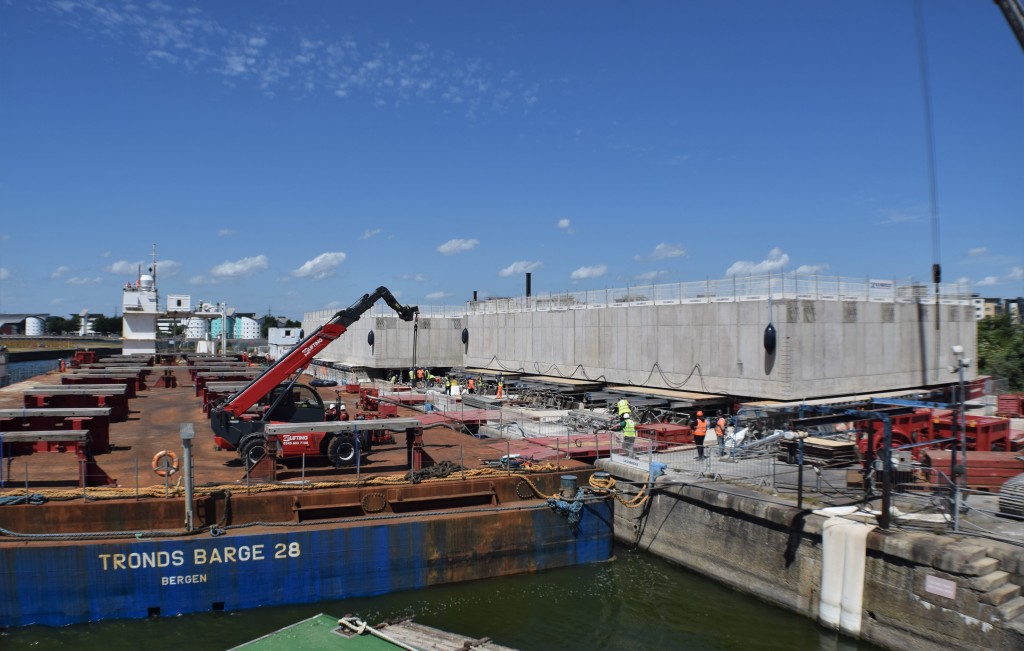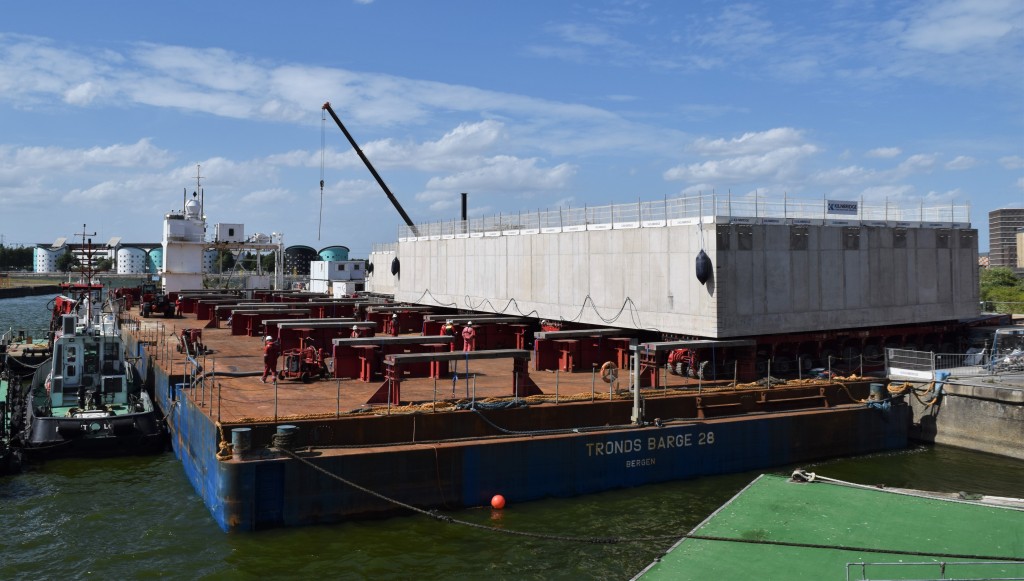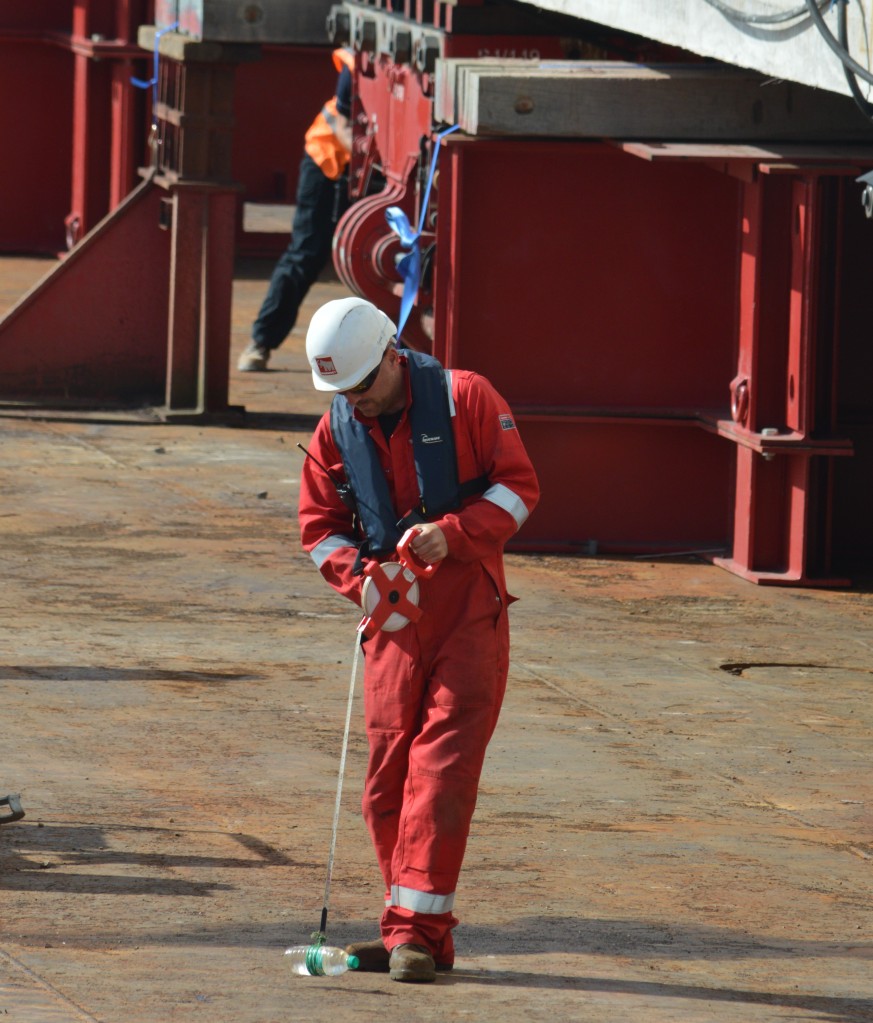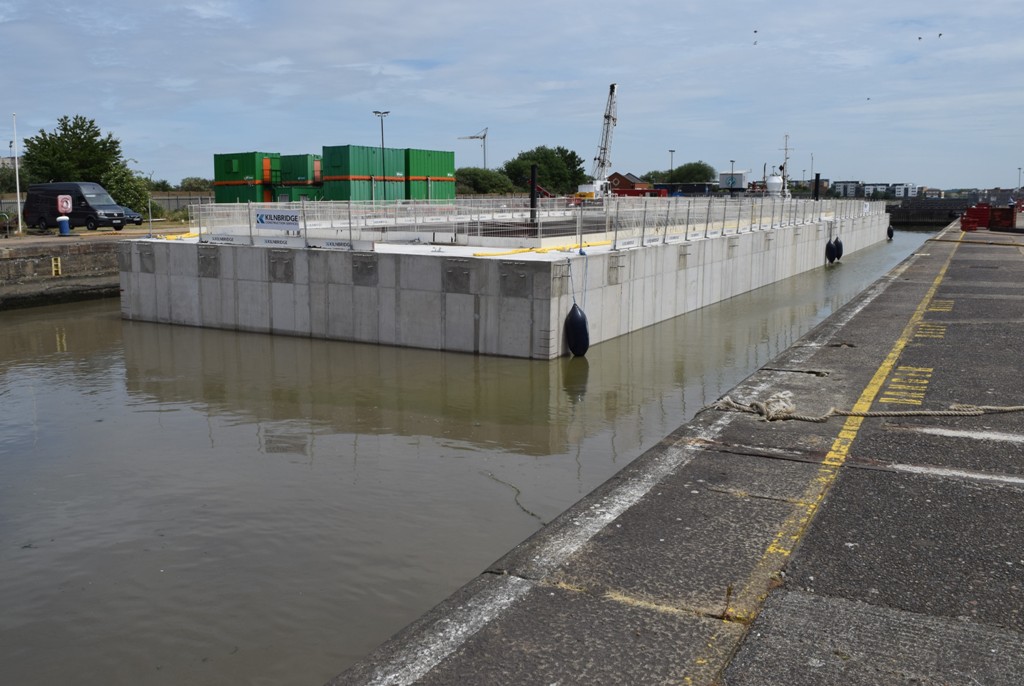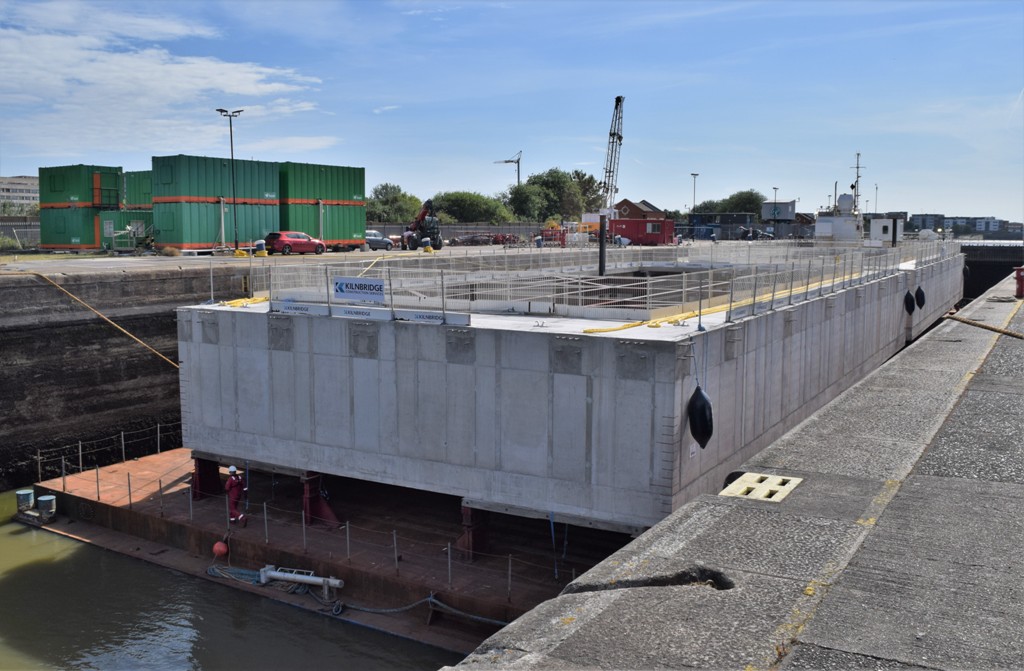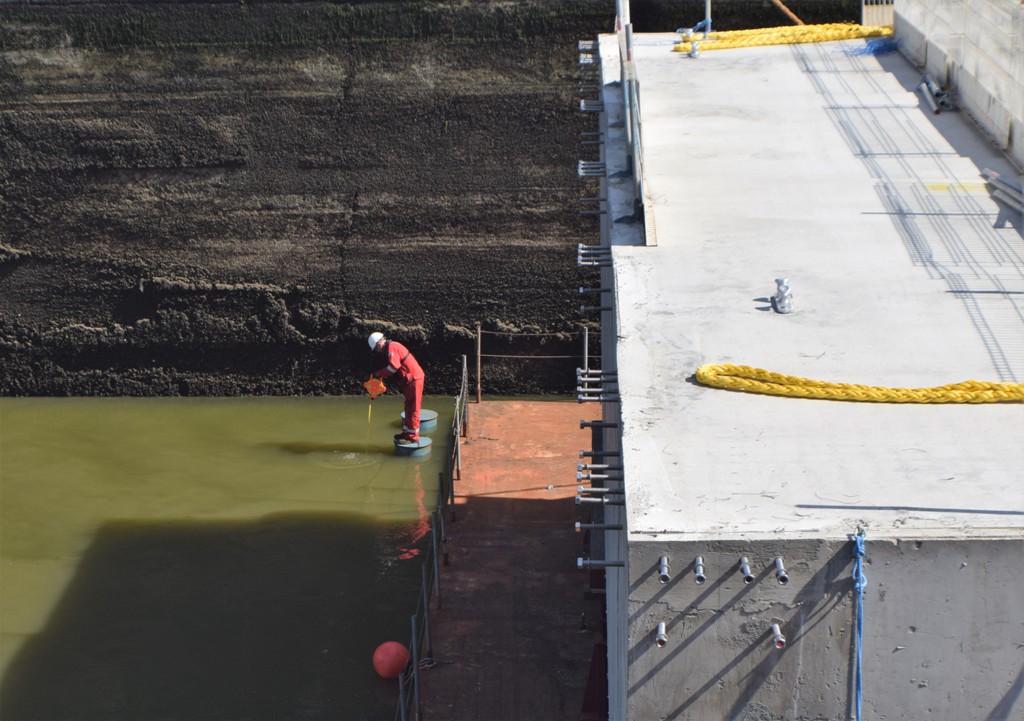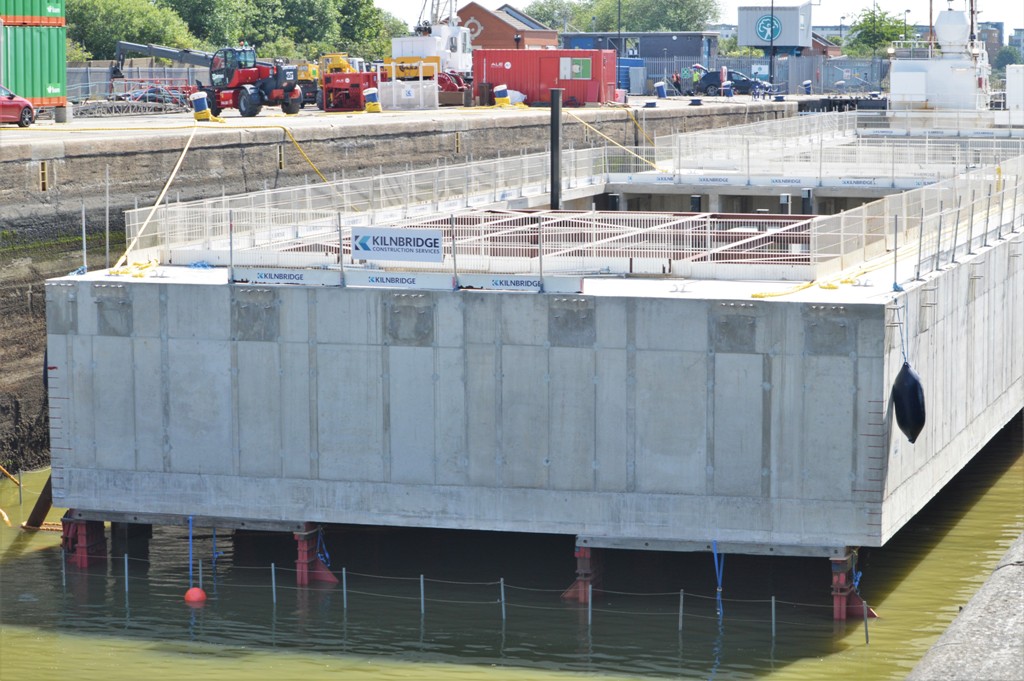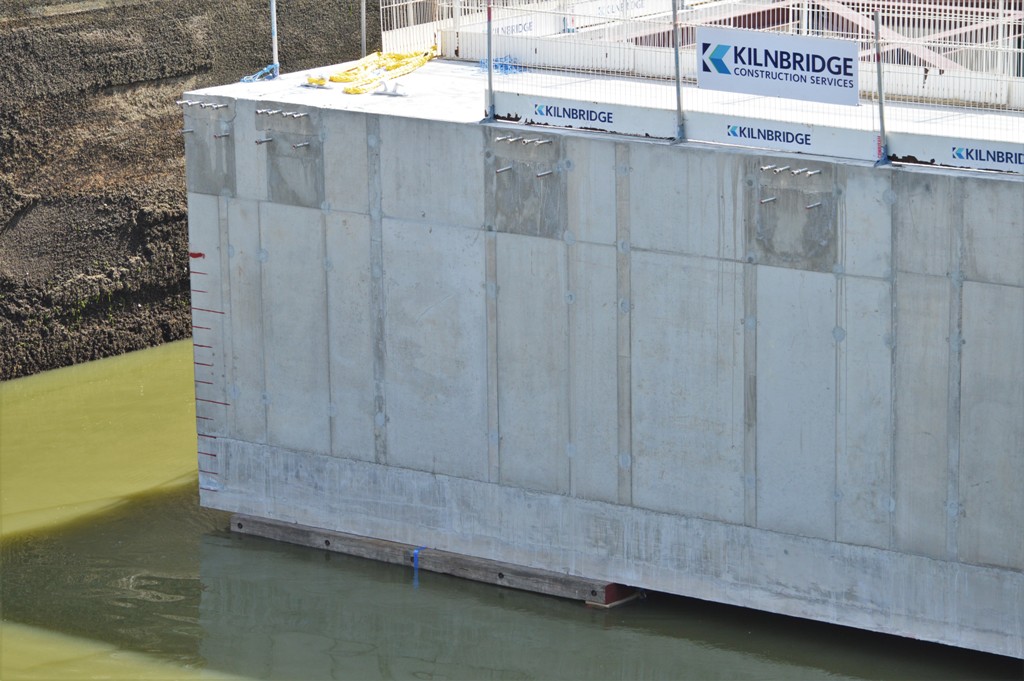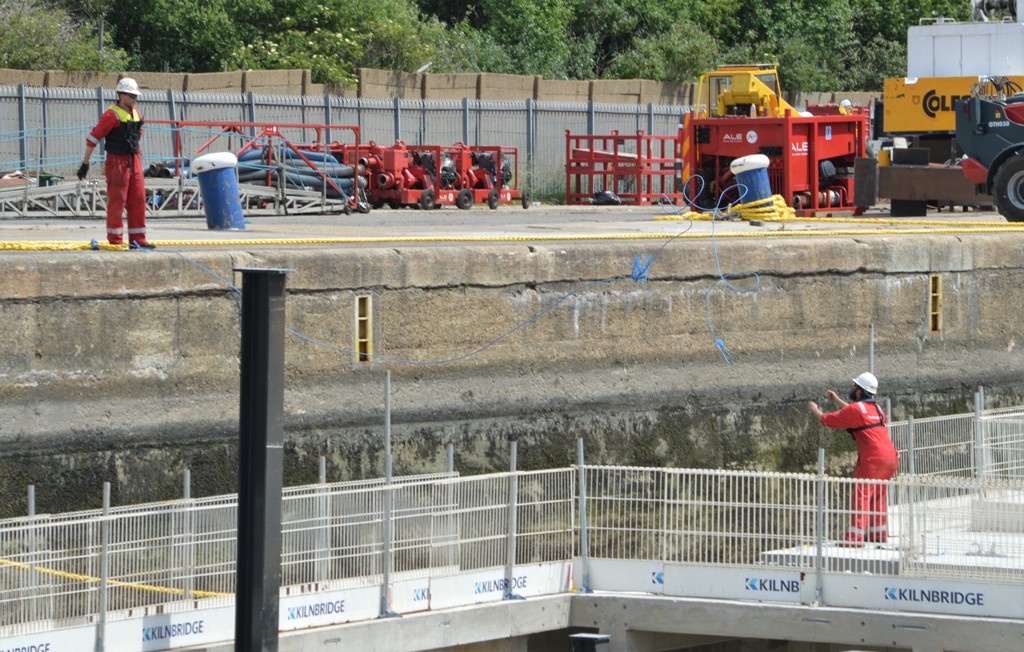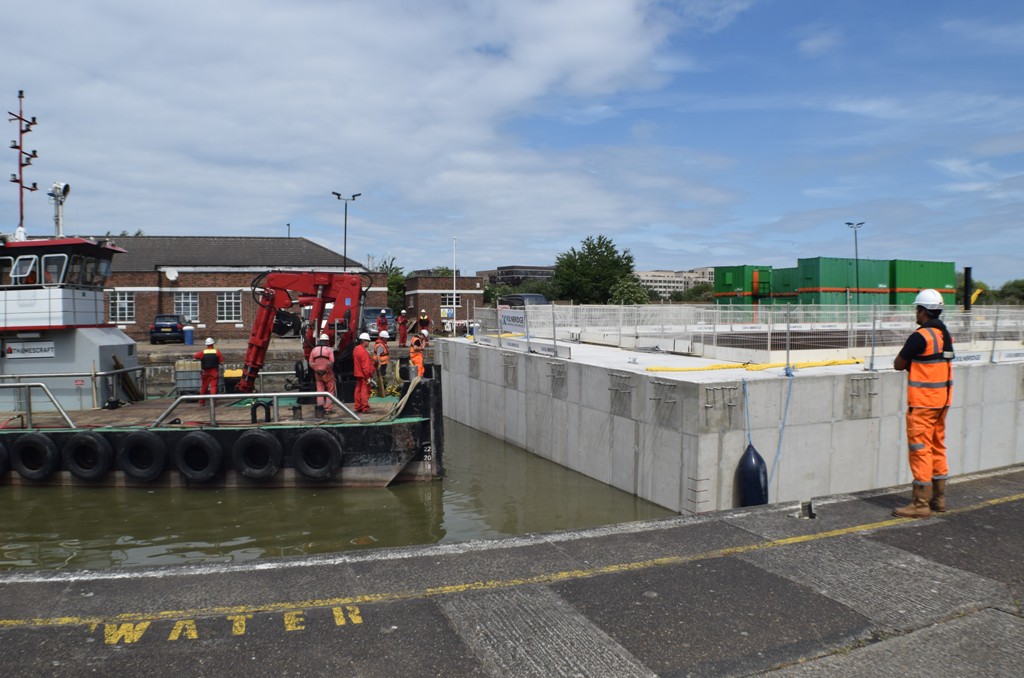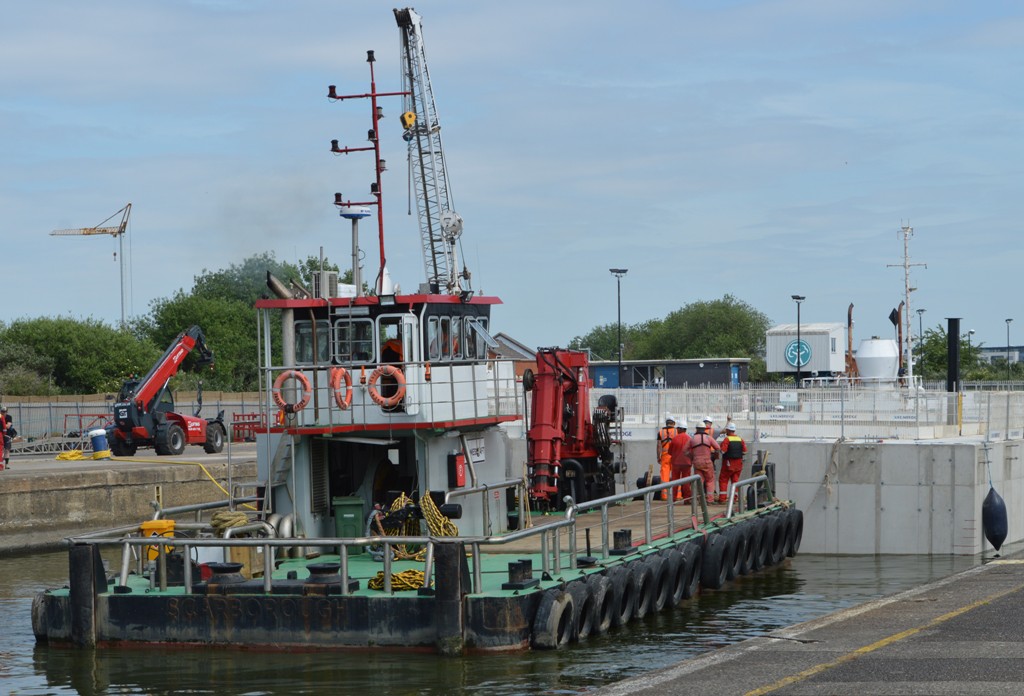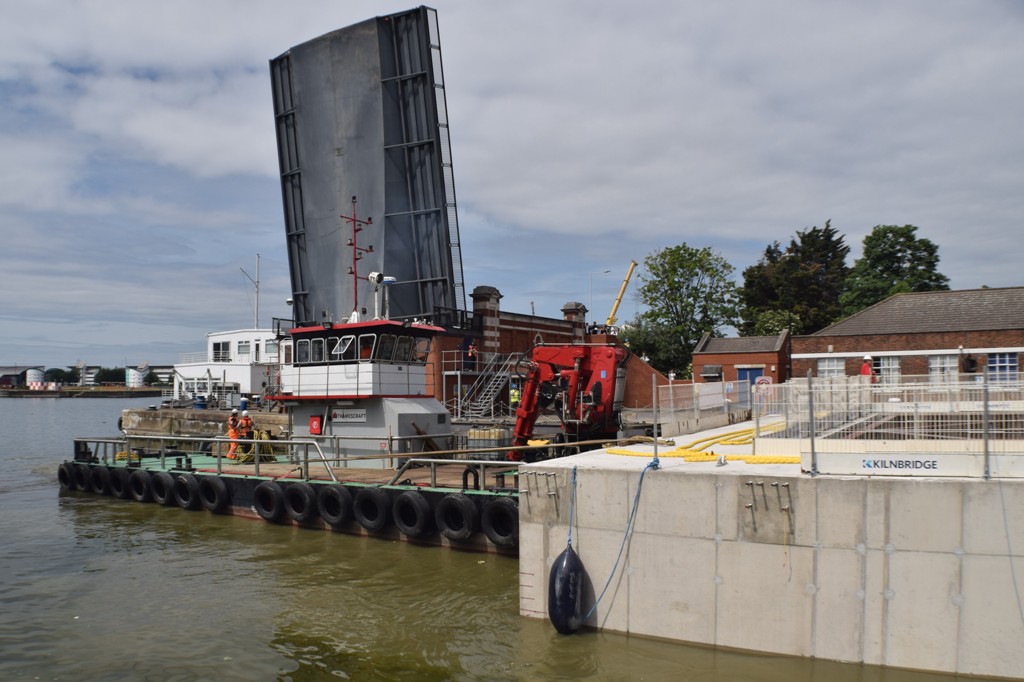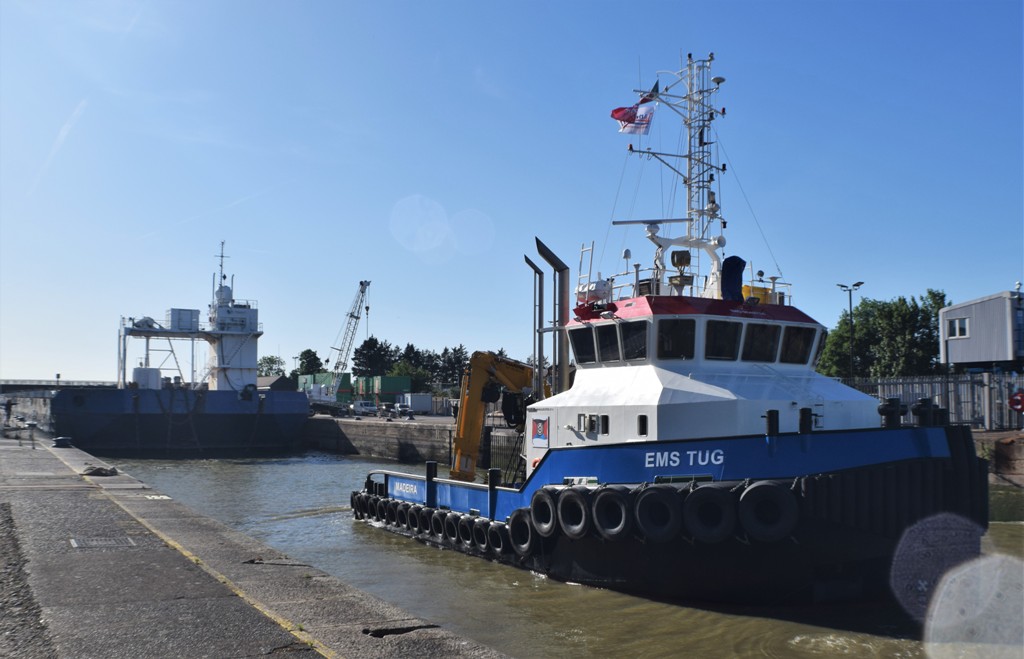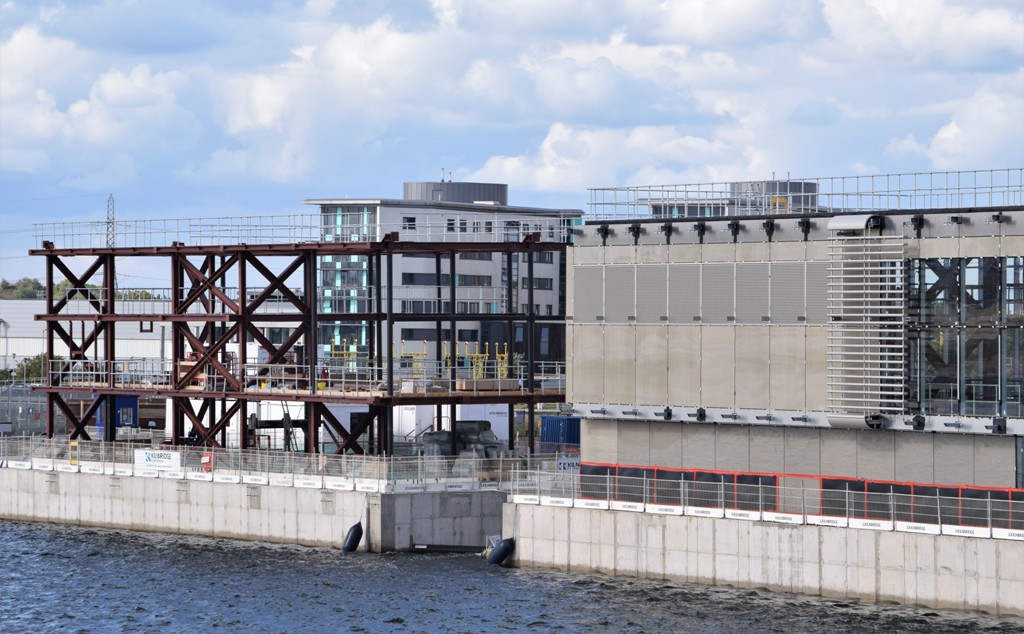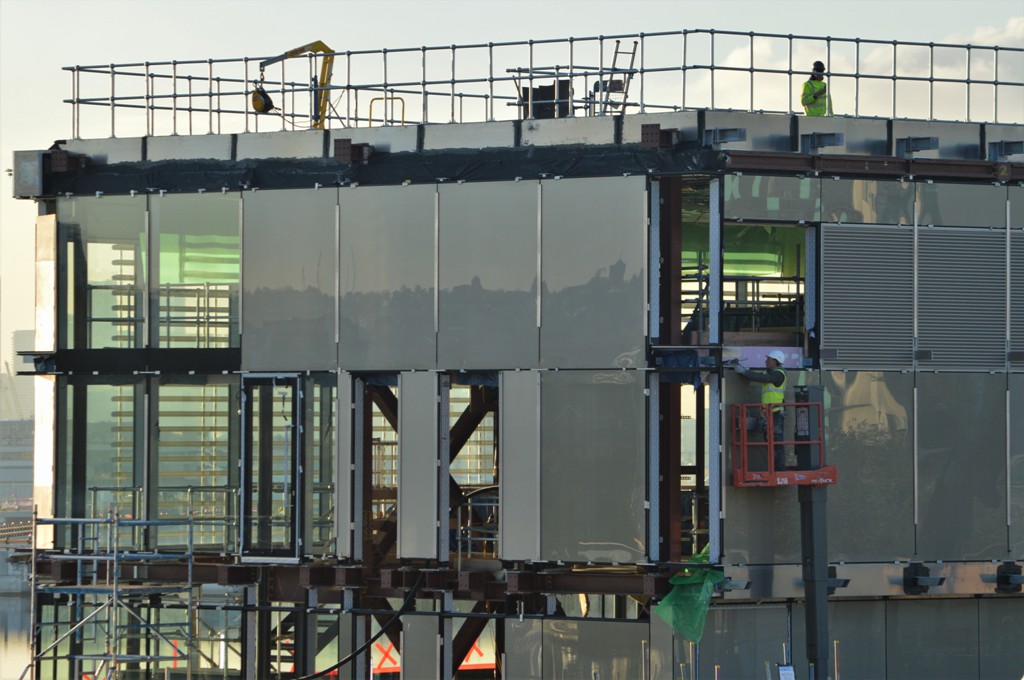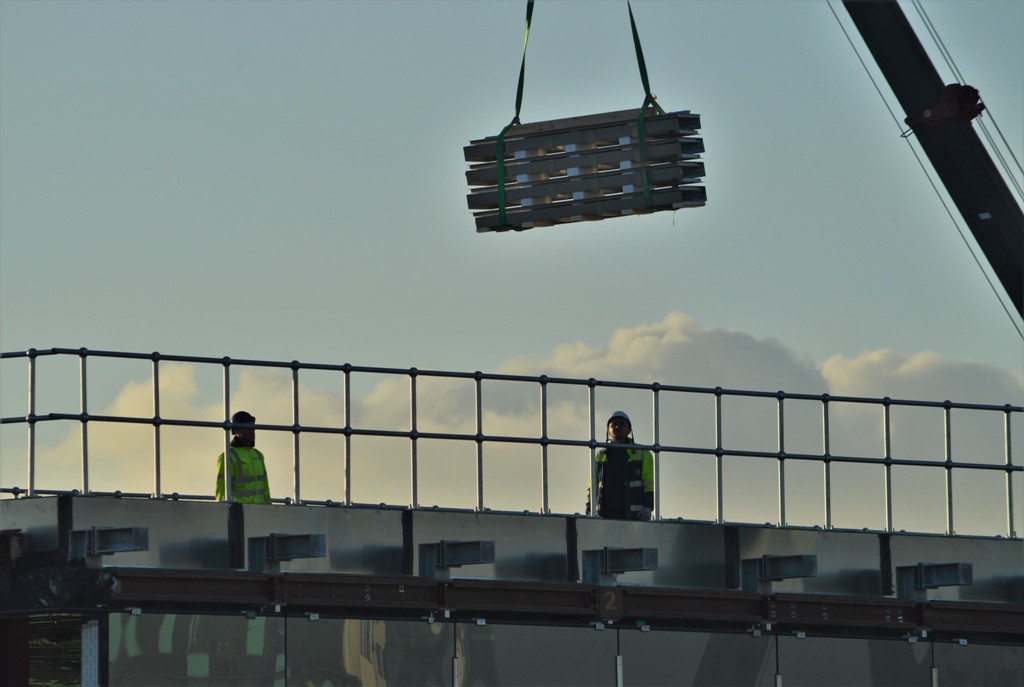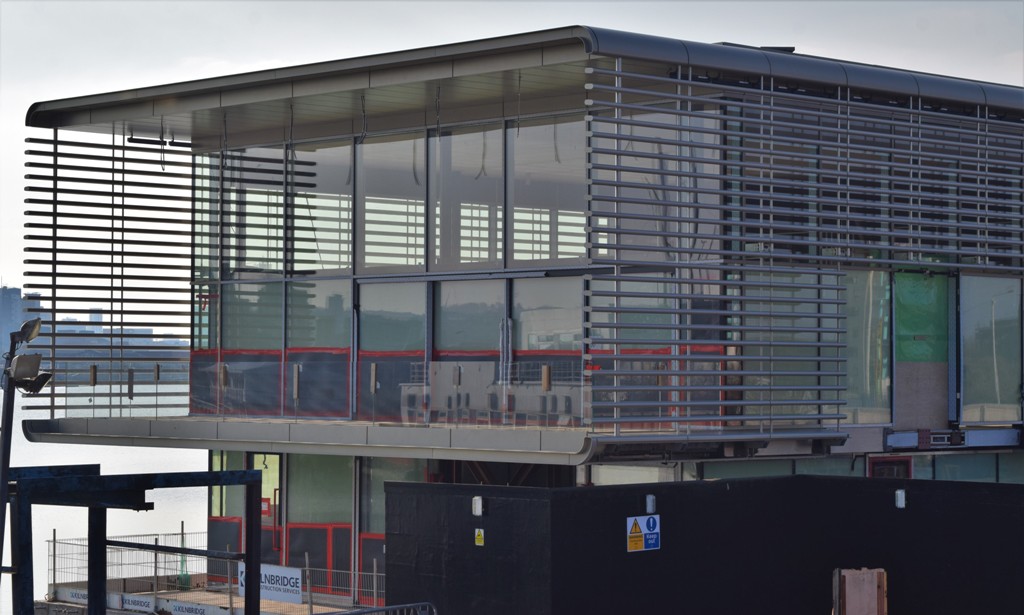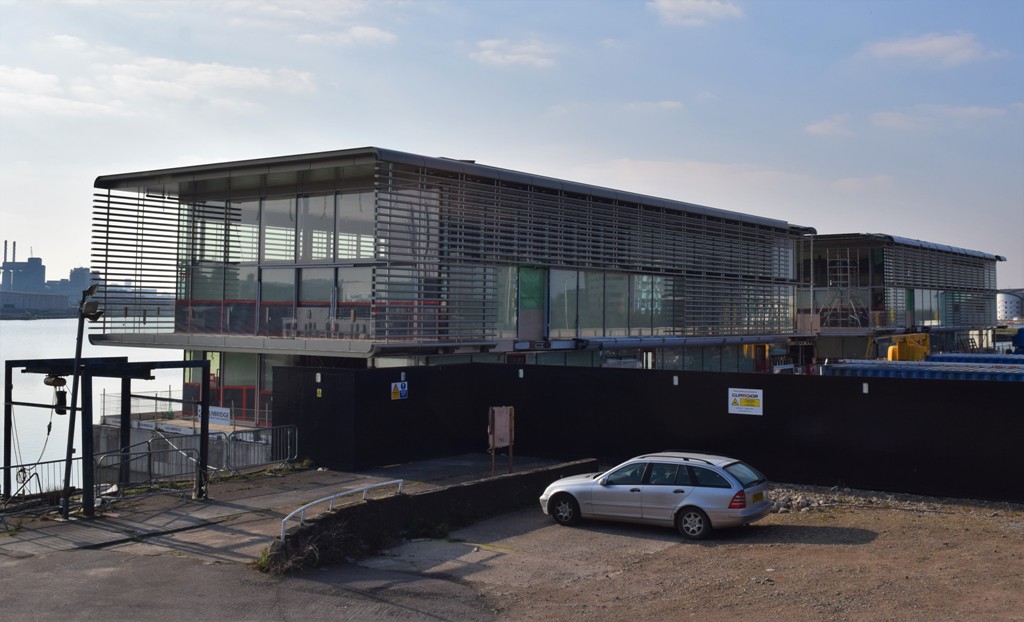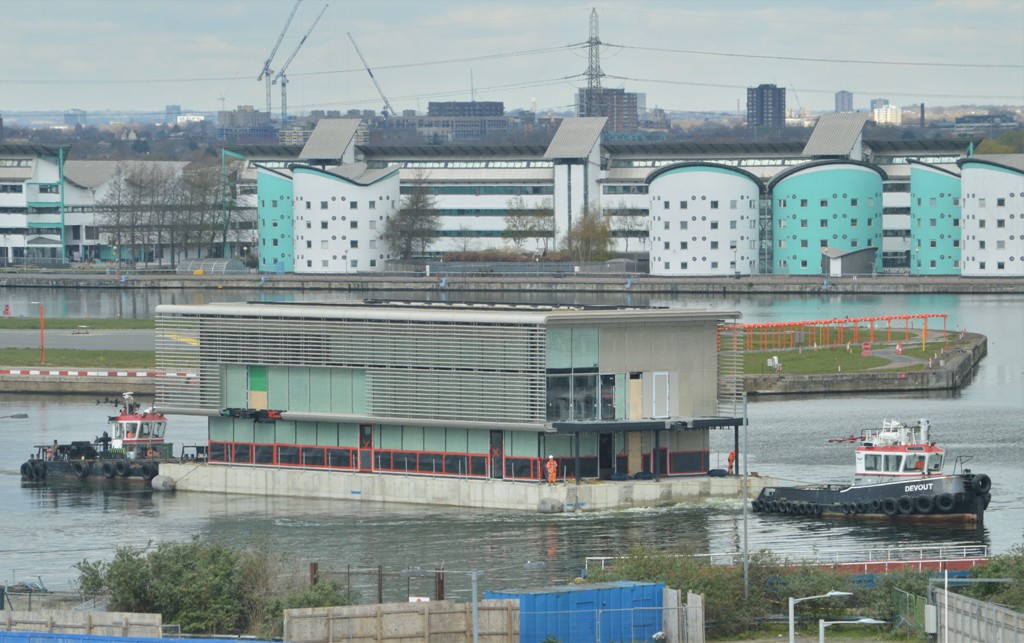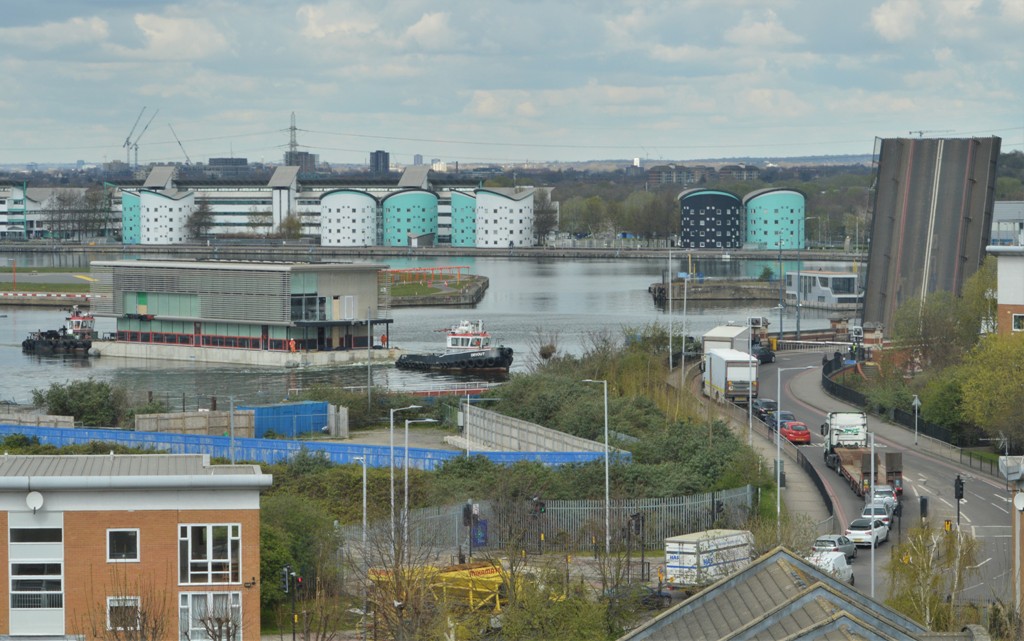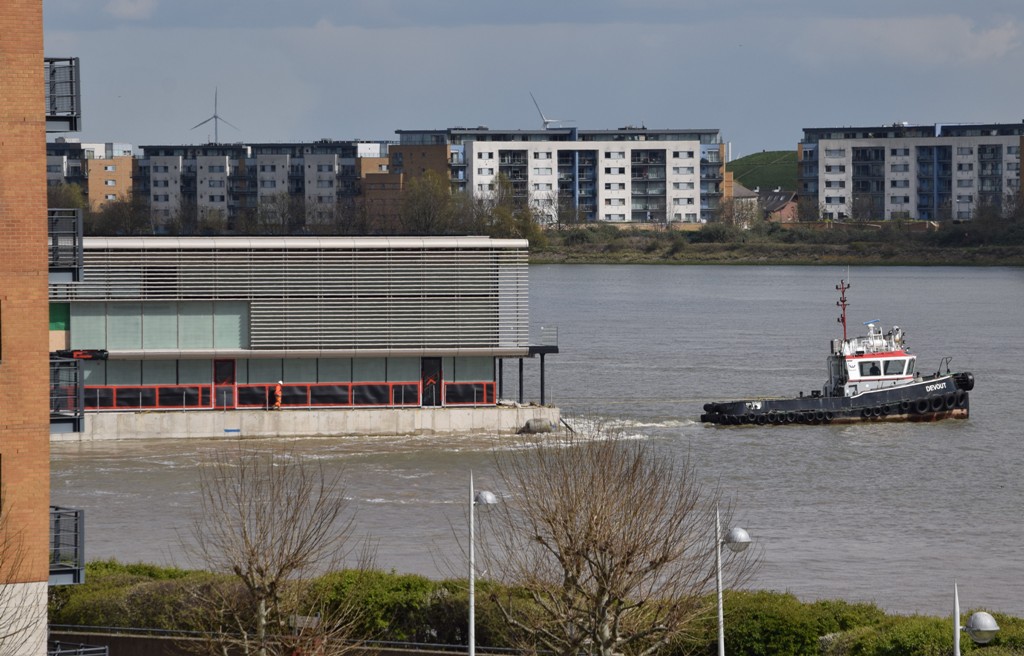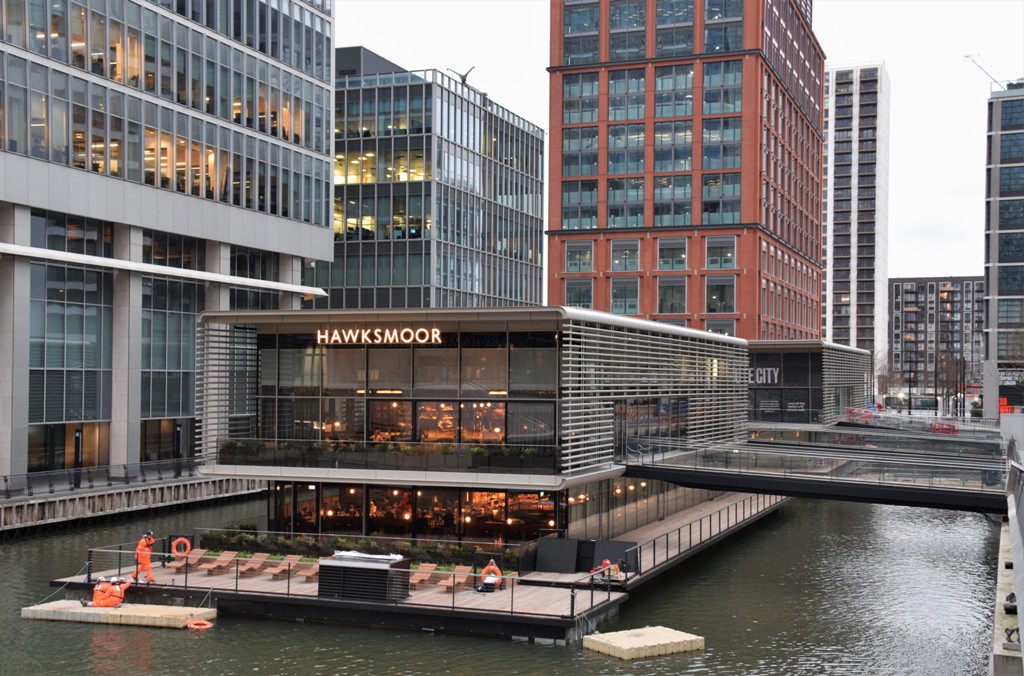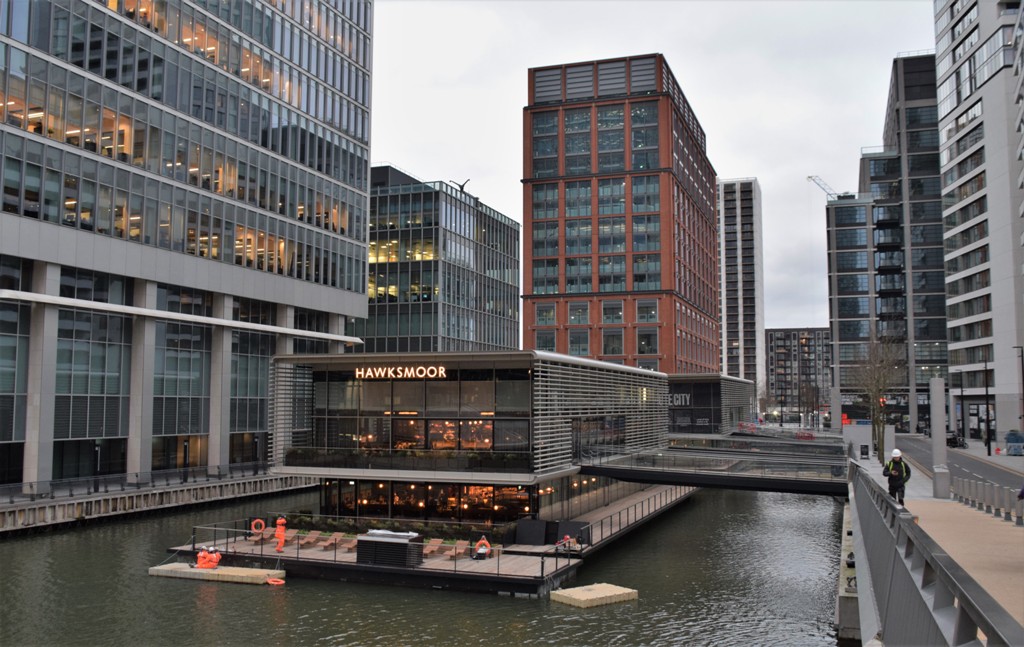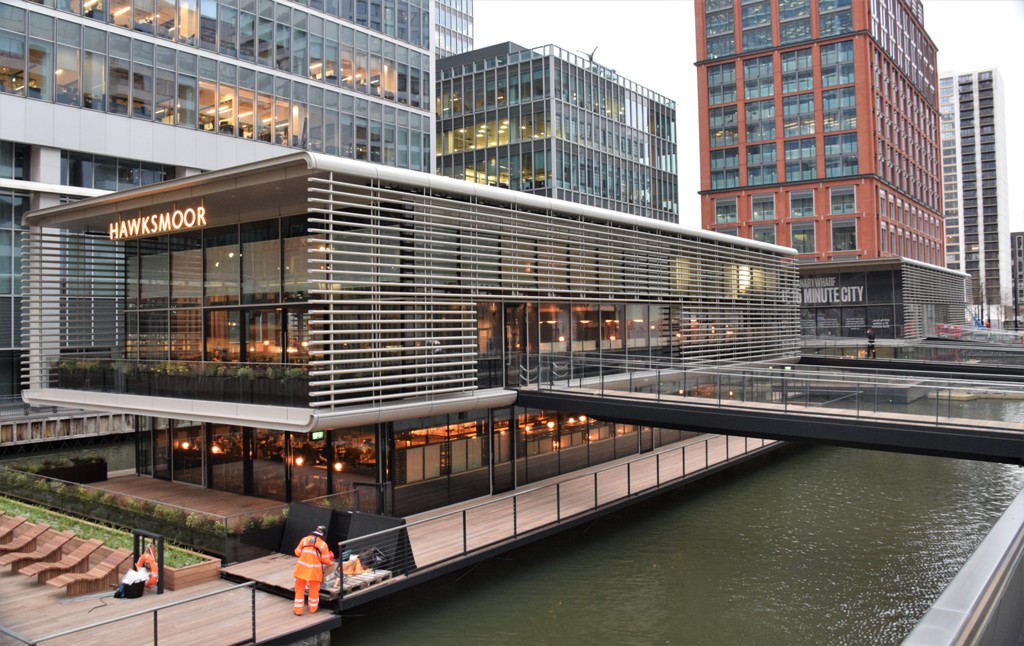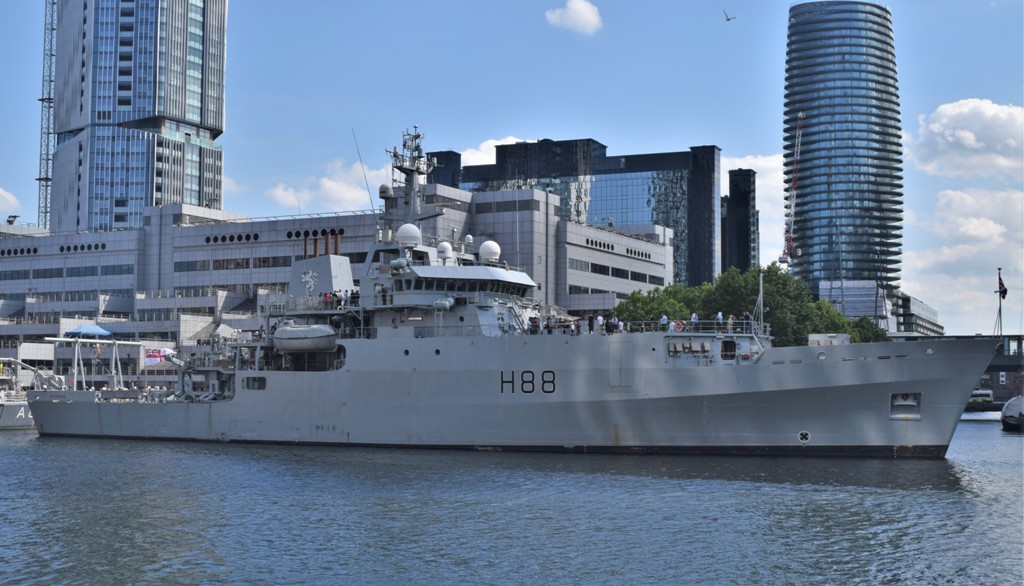The Maritime Heritage Trust working with the Sea-Change Sailing Trust and other partners helped celebrate maritime heritage as part of Newham Heritage Month programme of activities and achieved some historic milestones along the way by securing the attendance of the Thames Sailing Barge BLUE MERMAID that not only provided public tours of the vessel but was also carrying a token cargo to support another of the heritage projects taking place in the Royal Docks area..

Pictures and a video of the BLUE MERMAID arriving at the Royal Docks can be seen here.
An early morning transit of the docks was supported by Livett’s Launches tug THAMES VIXEN which moved the BLUE MERMAID to it’s moorings alongside ExCel and the tug stayed near the barge and also attracted quite a bit of interest as it is not often that the public get to be that close to a tug in the docks these days.
Visitors were able to go on board the BLUE MERMAID and the friendly crew were happy to show people around and explain the history and operation of the vessel and it was also possible to go below decks to see the living spaces and cargo hold.
The vessel is designed to provide maritime skills training for young people but also has plans to be a commercial cargo carrying vessel with the internal spaces designed to be quickly converted from a training ship to a cargo vessel.
The team from the Sea-Change Sailing Trust are already planning to return to the Thames with a cargo of higher value foodstuffs as part of sail trading enterprise that has been growing over the last few years. The trust is also looking at moving palletized dry-bulk cargo from the Thames Estuary up to various locations in the middle Thames area.

Towards the end of the second day of public tours various representatives from the ‘Brickfields Newham’ project can to visit the Barge and to collet the token cargo of clay and sand (which will be used to make bricks) – it had been a long time since commercial cargo had been unloaded from a ship in Royal Victoria Dock and even longer since the vessel in question was powered only by the wind! History being made again in the Royal Docks.

Bags of clay and sand transported from Essex by sea 
Raw materials to handed over to the ‘Newham Brickfields’ project team 
Close-up of the clay 
Maritime Heritage Trust delivering the goods 

Many hands 


Transferring the cargo 
A job well done 
A modern take on the ‘dockers barrow’ to move the clay from the quayside!
Many of the visitors commented about how nice it was to see vessels in the Docks and so it is hoped that this can become a more regular feature, both in terms of heritage vessels for the public to engage with but also for cargo trips especially using more environmentally friendly vessels.
All too soon it was time for the BLUE MERMAID to return to the Thames and to head off for it’s next job – this time to undertake crew training as handling a sailing barge takes a special skillset.

The following video shows the BLUE MERMAID departing the KGV Lock and heading off down the Thames.

Click on this link for more pictures of Thames Sailing Barges.

















































